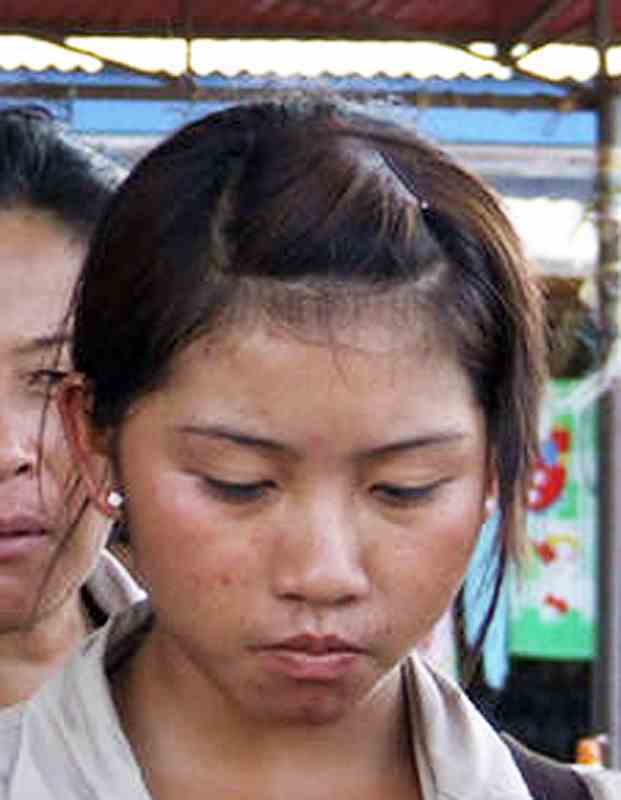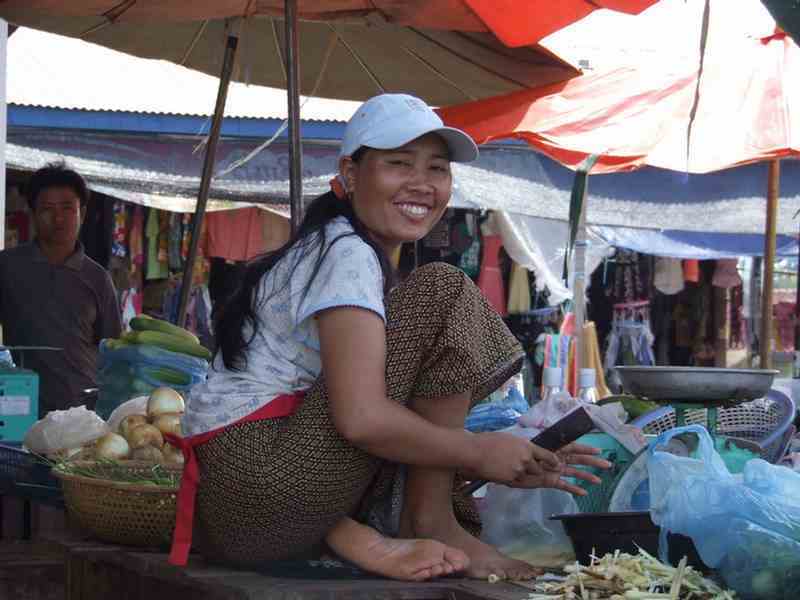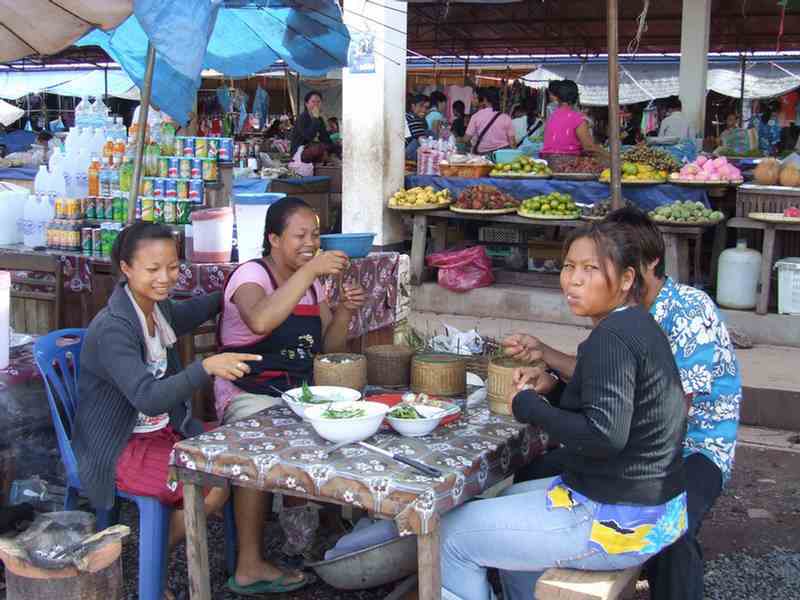Vientiane - Laos - 2007
I had a 4-week Indochina trip in May-June 2007.
(Melbourne – Bangkok – Thailand – Laos - Vietnam - Cambodia -Thailand – Bangkok - Melbourne)
On my IntrepidTravel tour we flew from Luang Prabang to Vientiane.
The capital of Laos, Vientianne is located on a bend on the Mekong River.
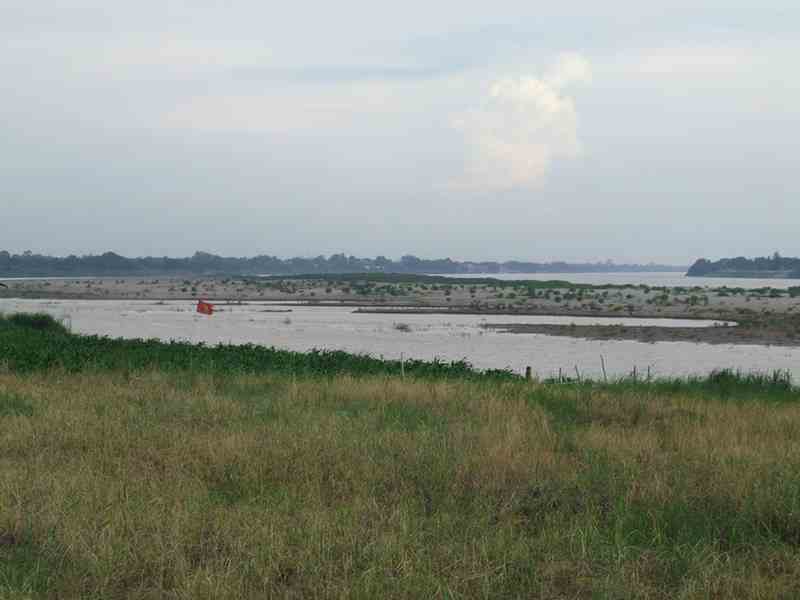
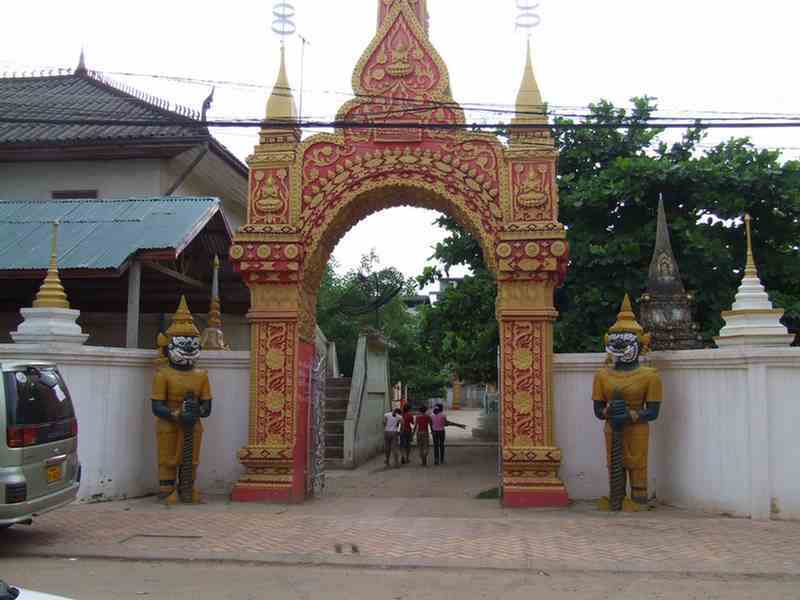
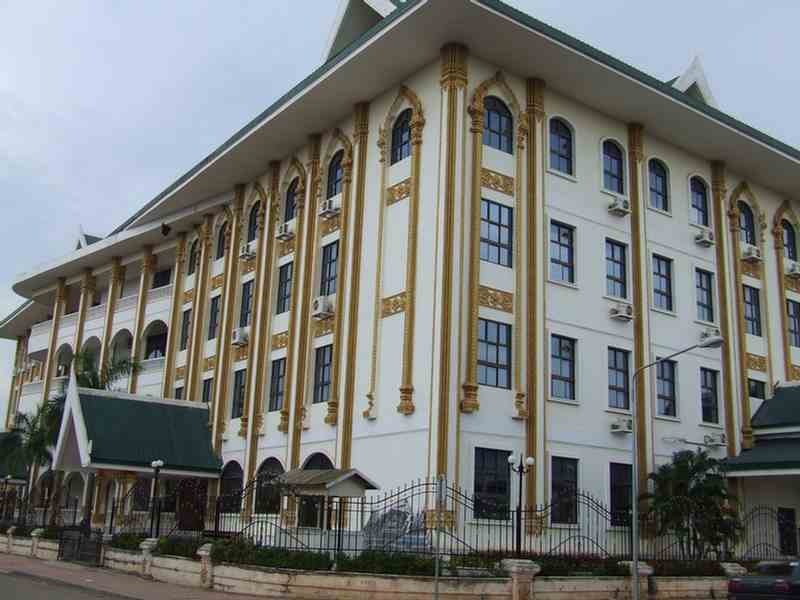
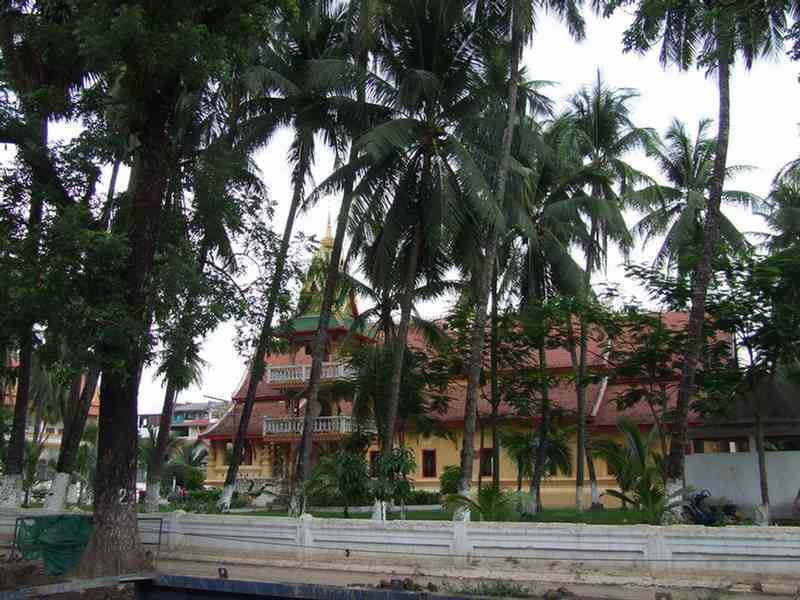

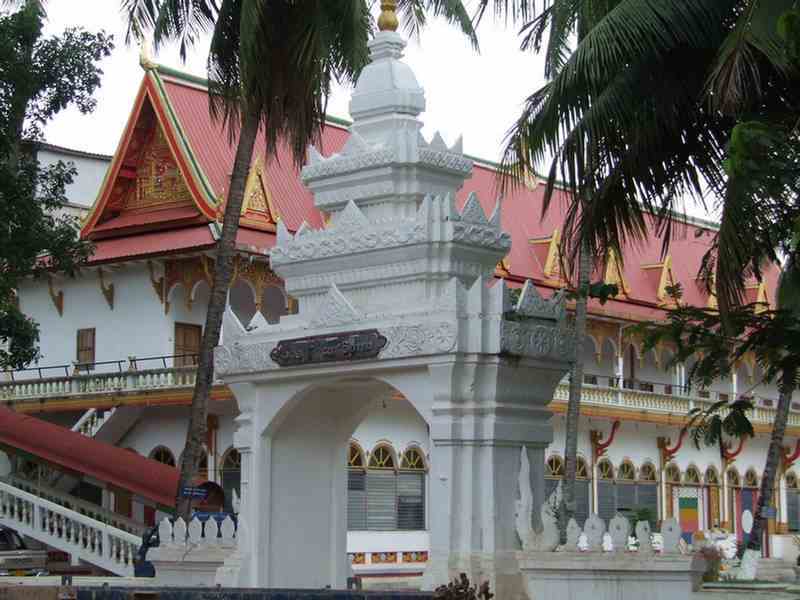
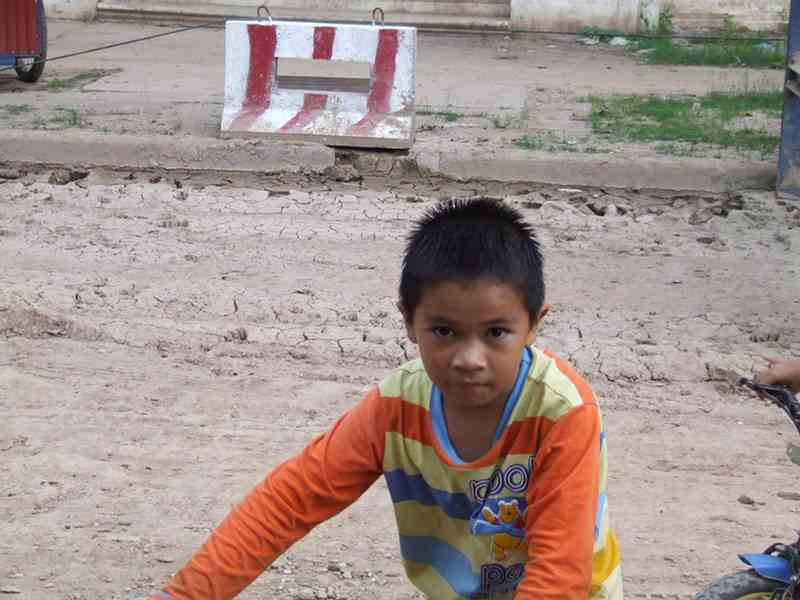

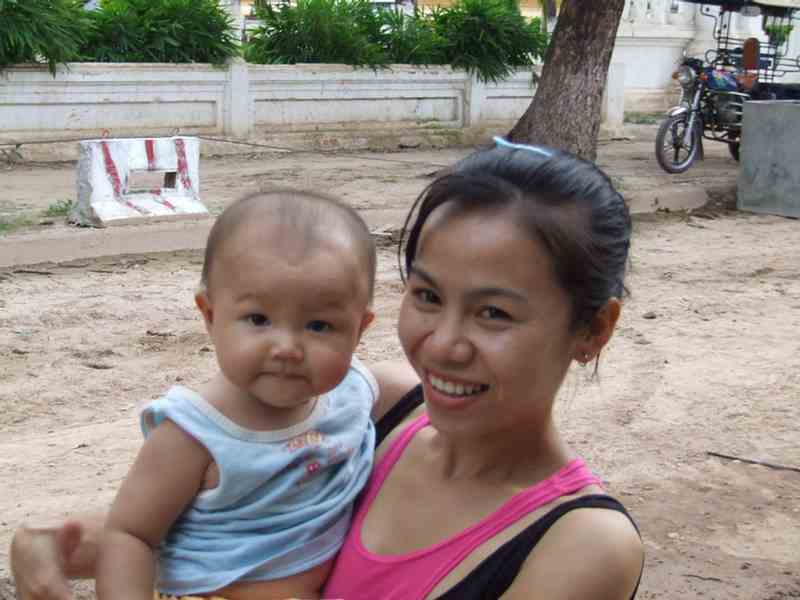
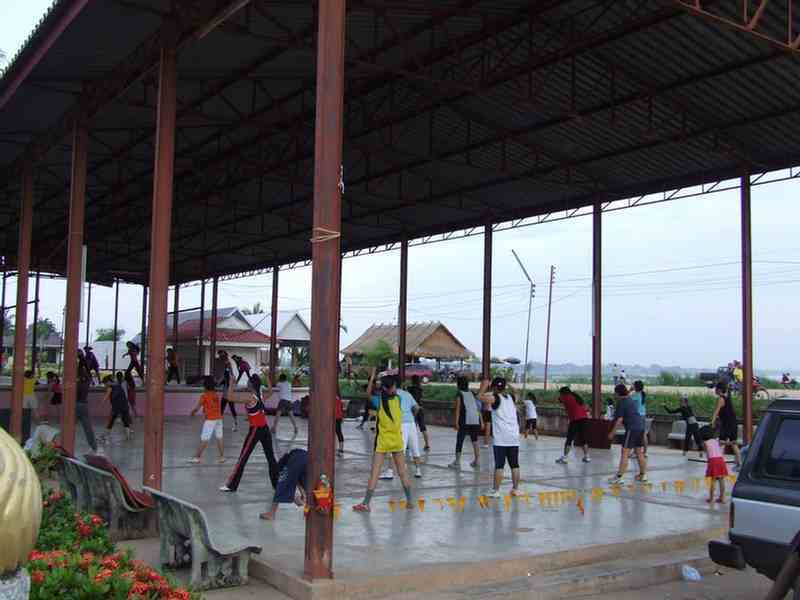

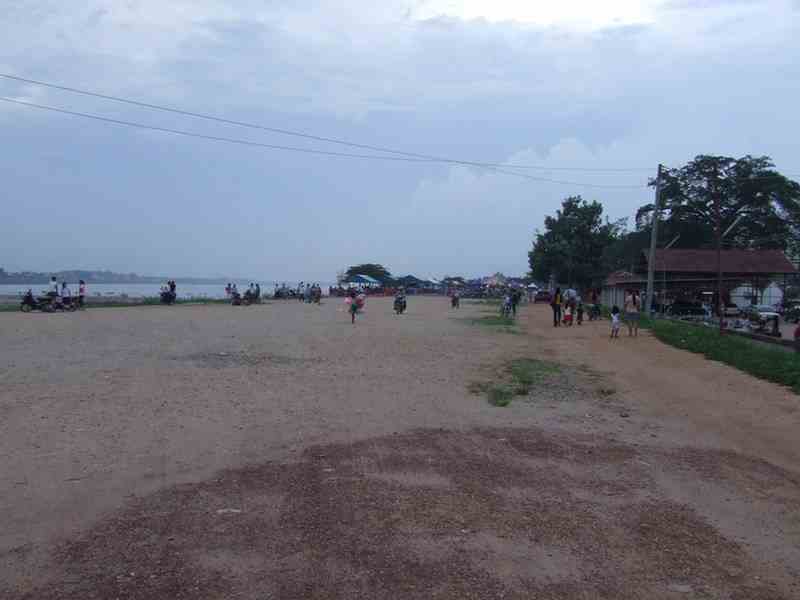
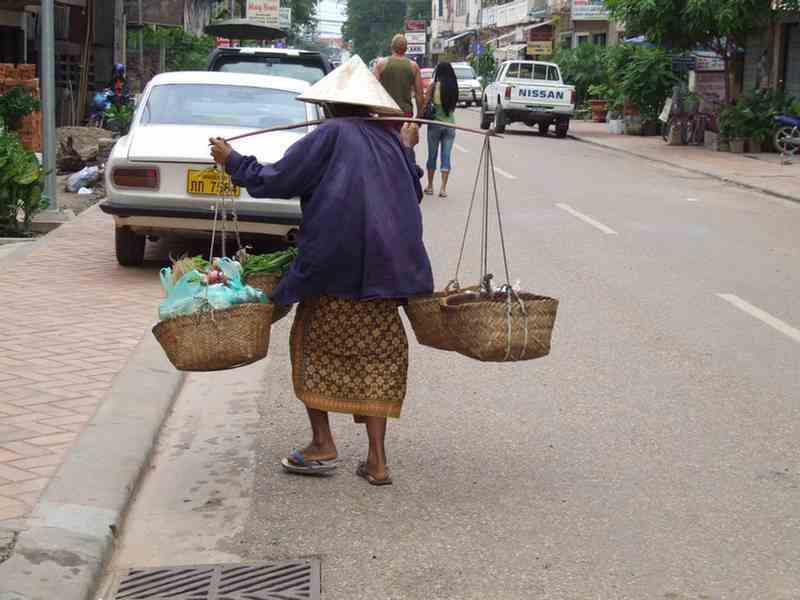
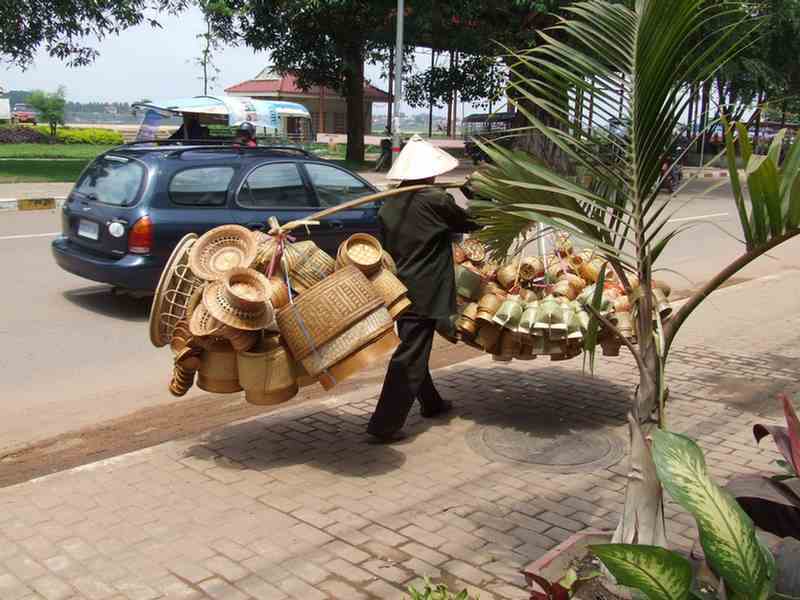
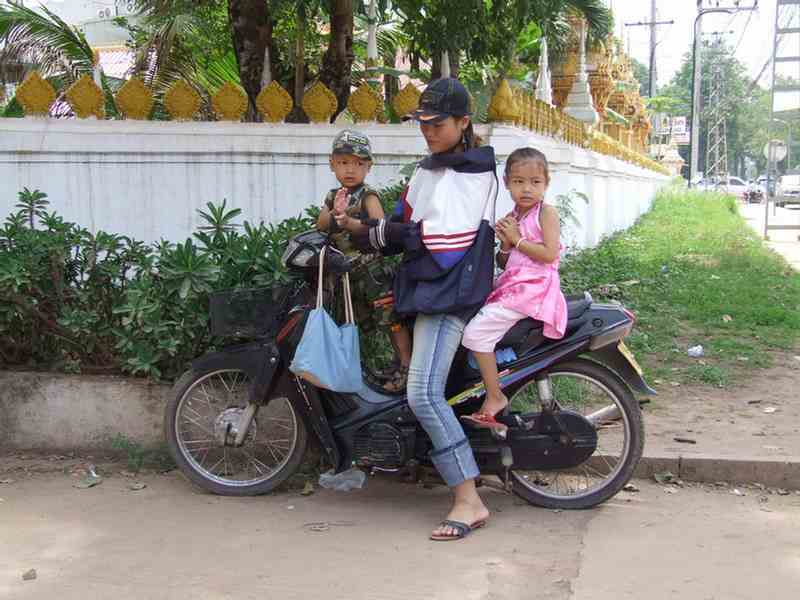
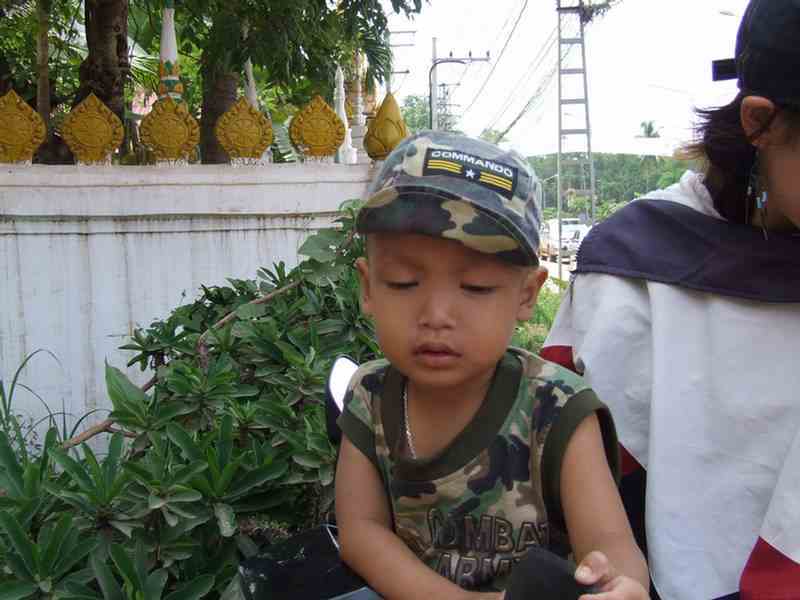
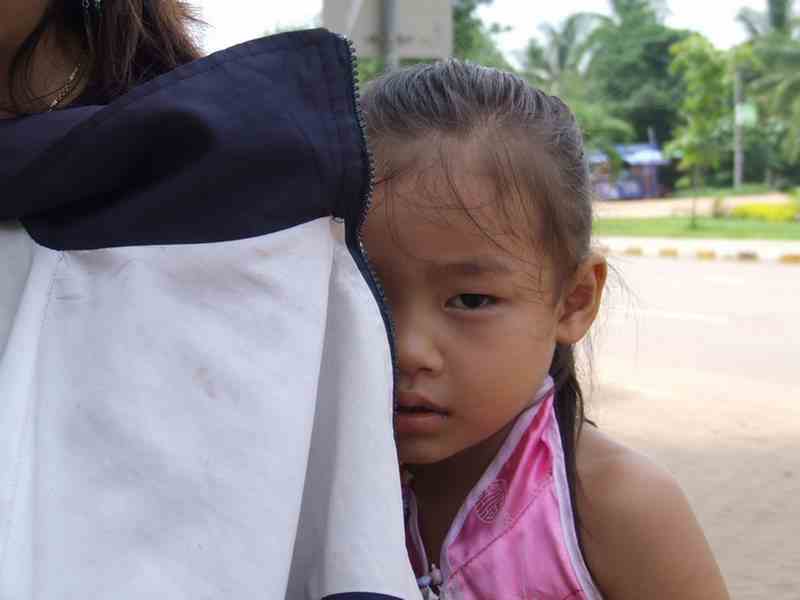
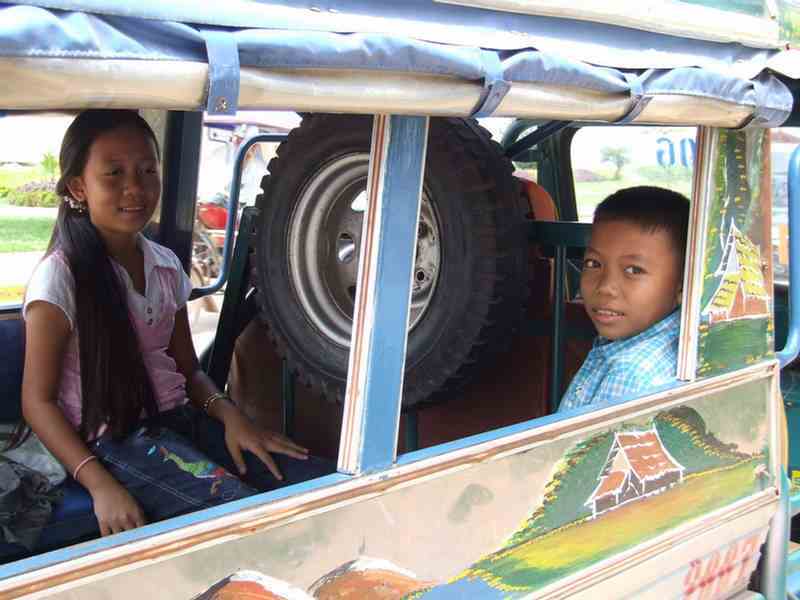
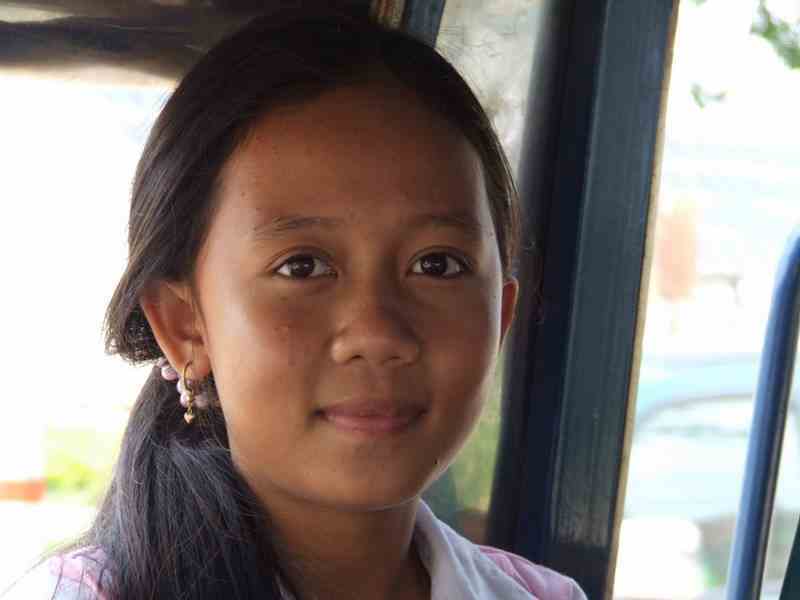
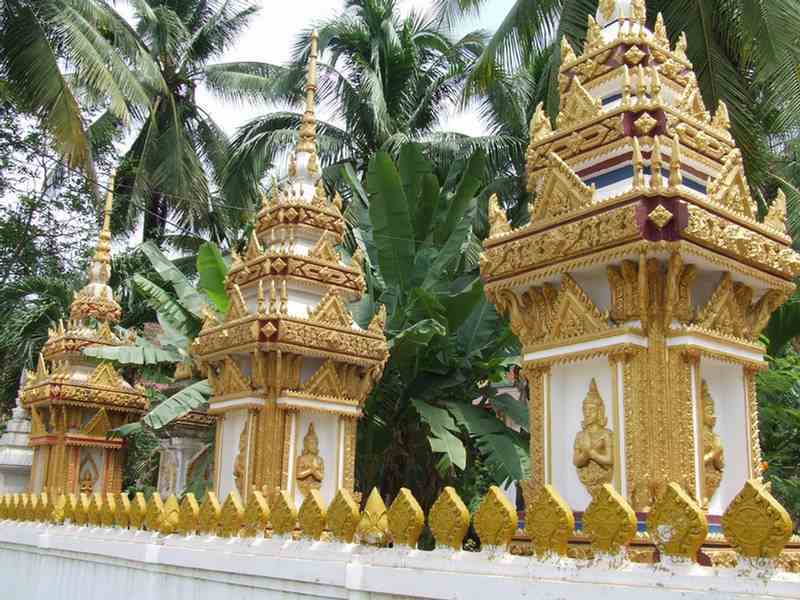
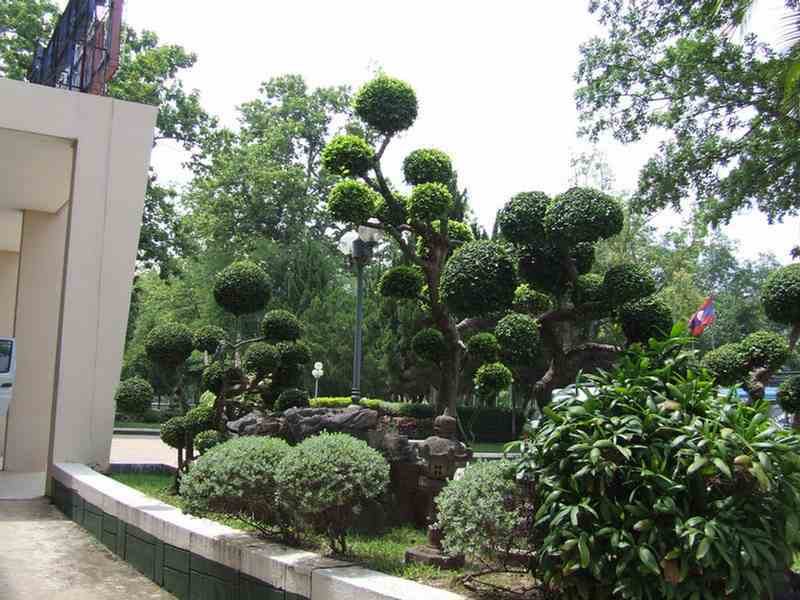
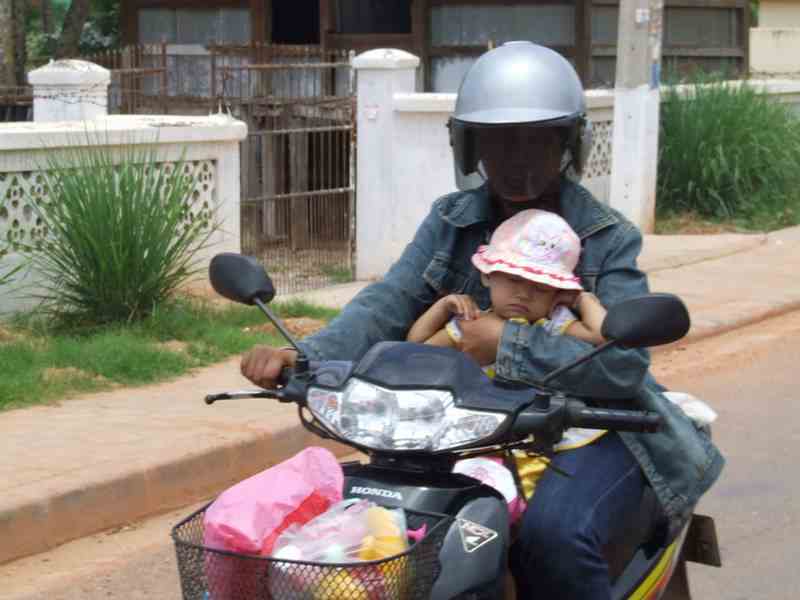
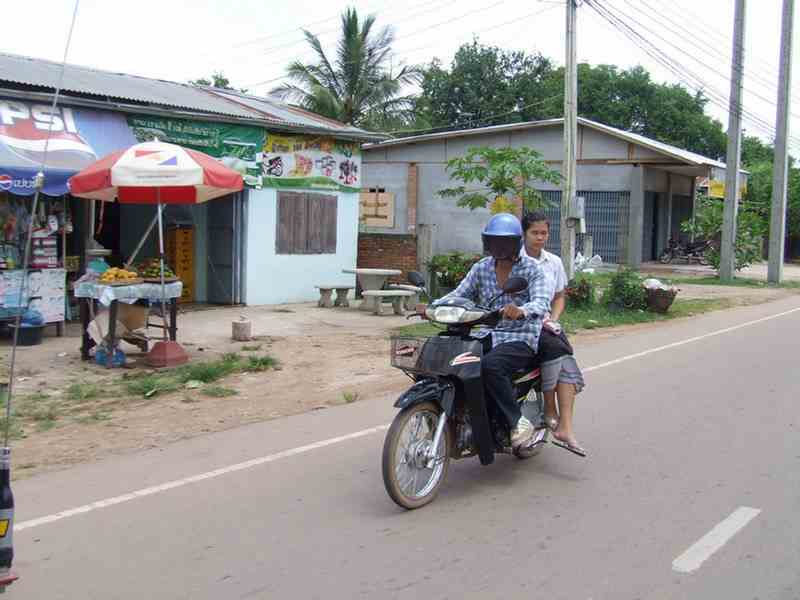

Xieng Kuane (Buddha Park)
We caught a tuk-tuk to Xieng Kuane, a Buddha park, 25km SE of Vientiane on the Mekong River.
Full of Buddhist and Hindu sculptures, it was designed and built in 1958 by
Luang Pu (Venerable Grandfather), Bunlenna Sulilat.
He was a noble-priest-guru-sharman who merged Buddhism and Hinduism into a religious philosophy.
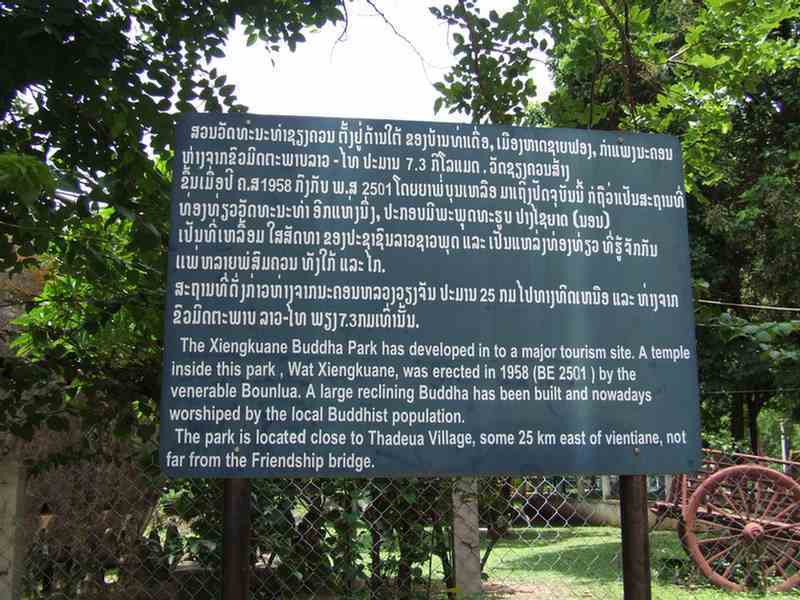
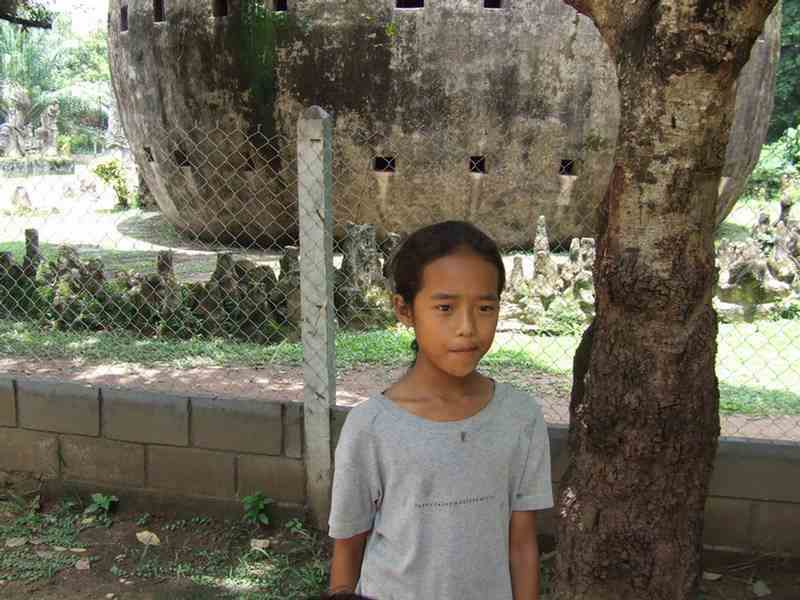
There are some bizarre sculptures.
The main dome is believed to represent heaven and hell
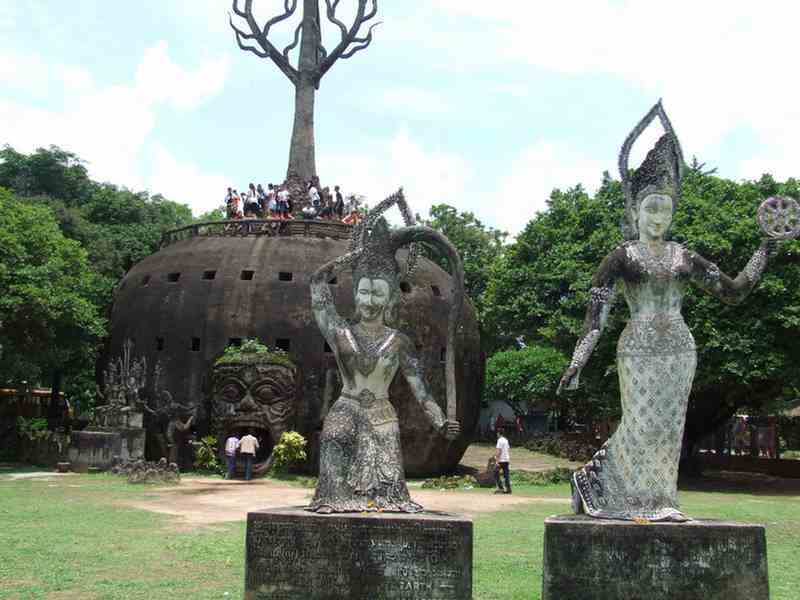

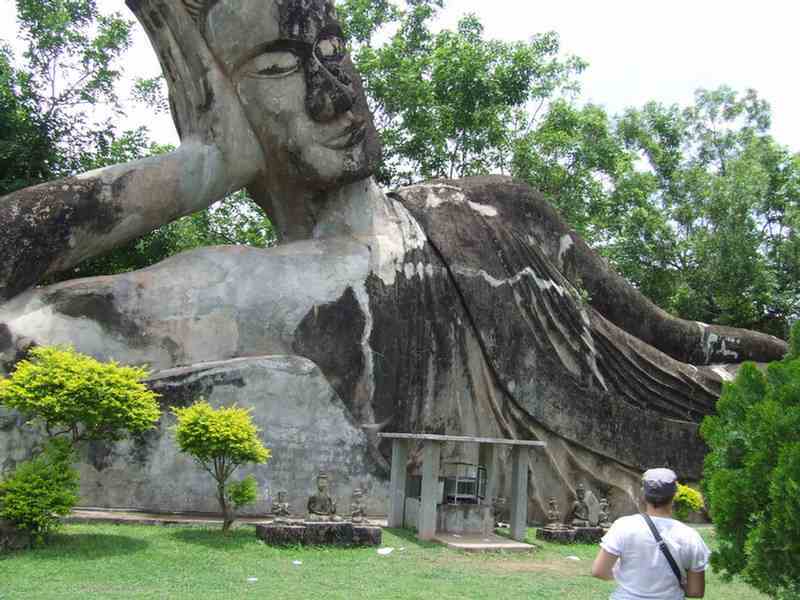

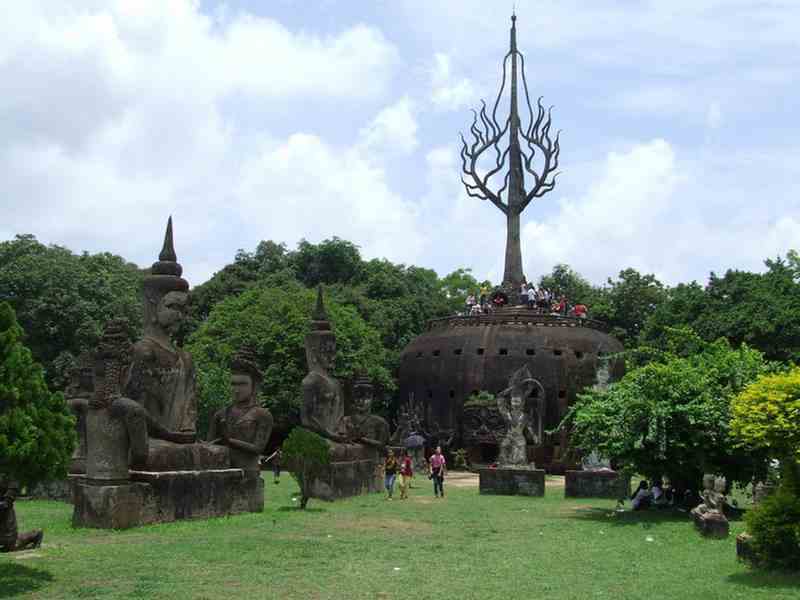
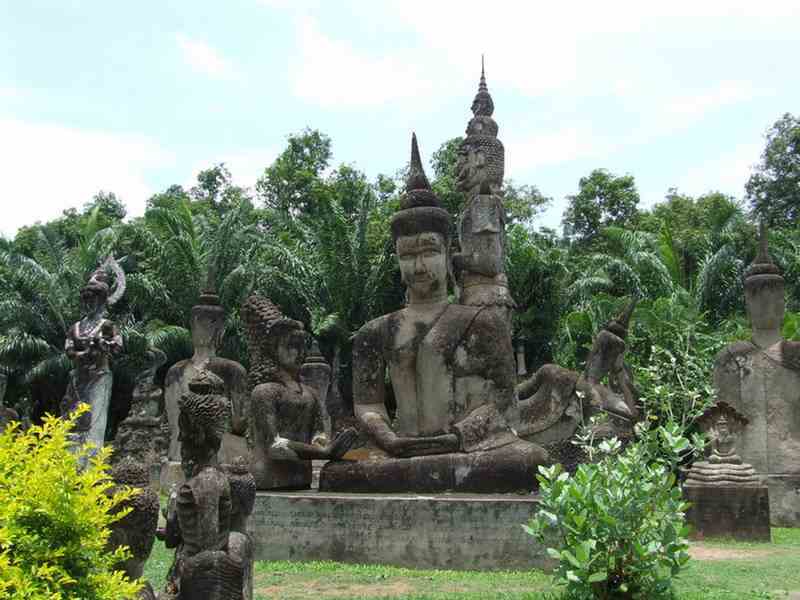
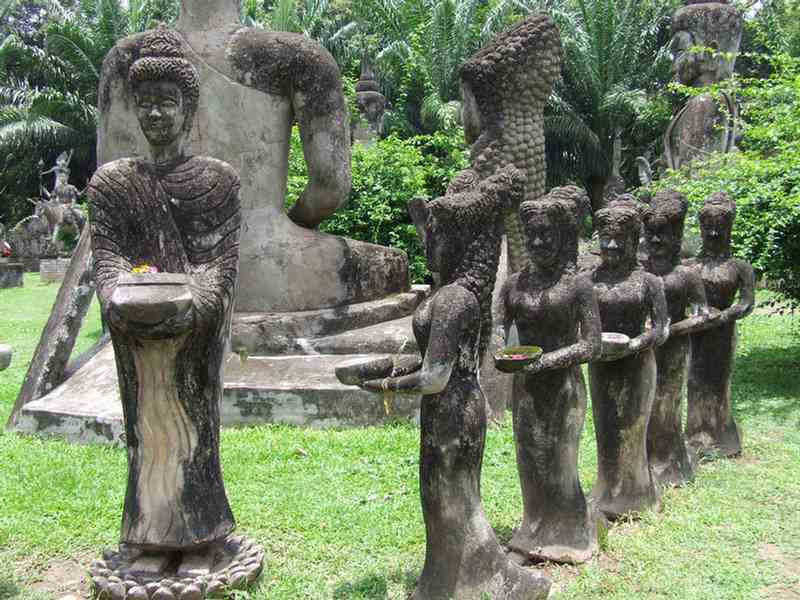
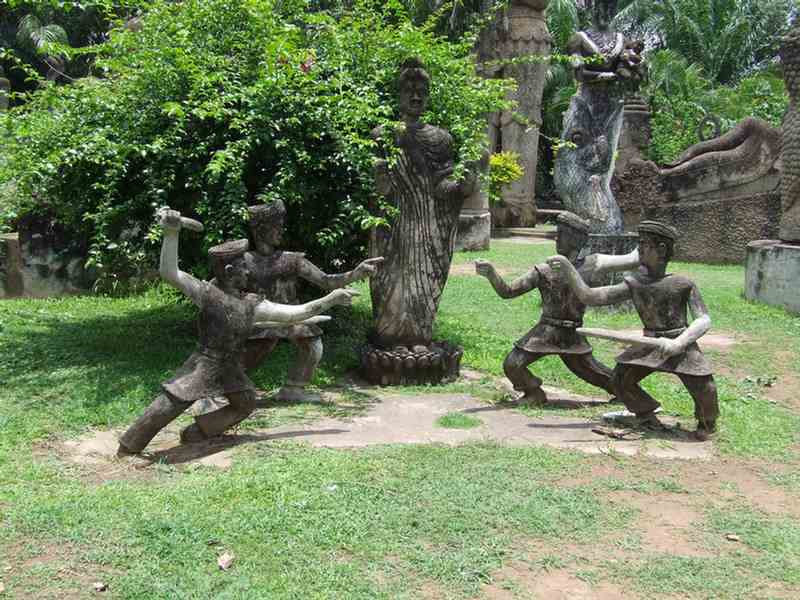
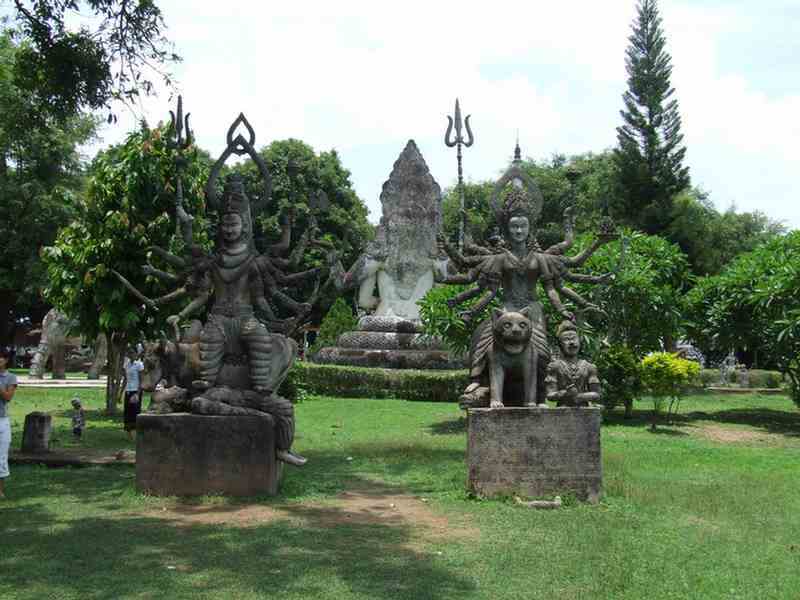

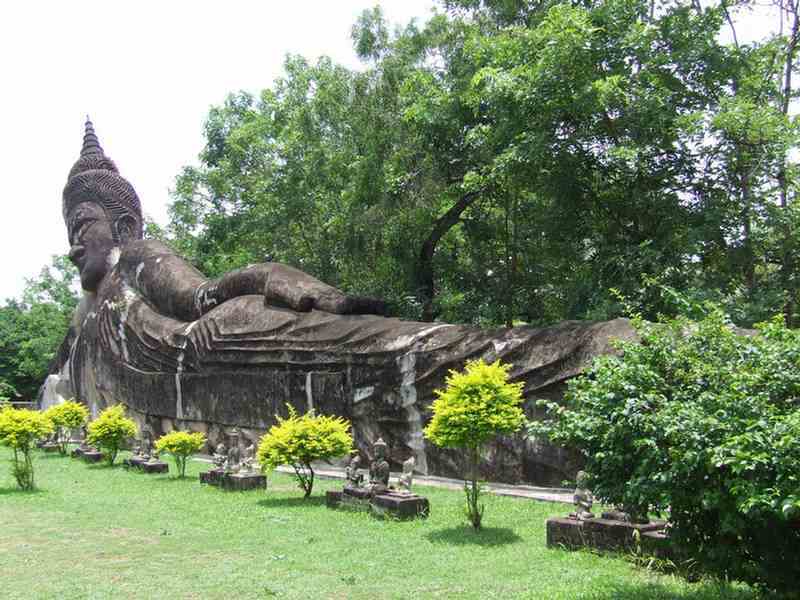



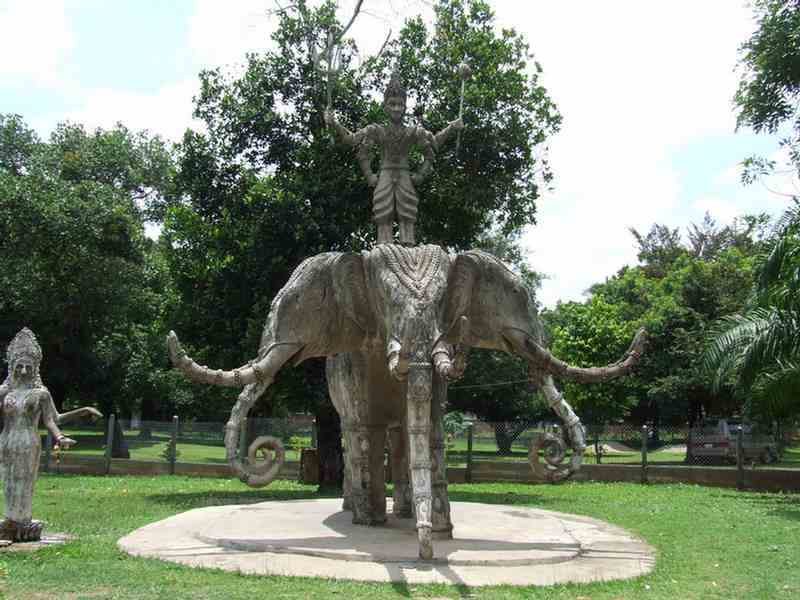
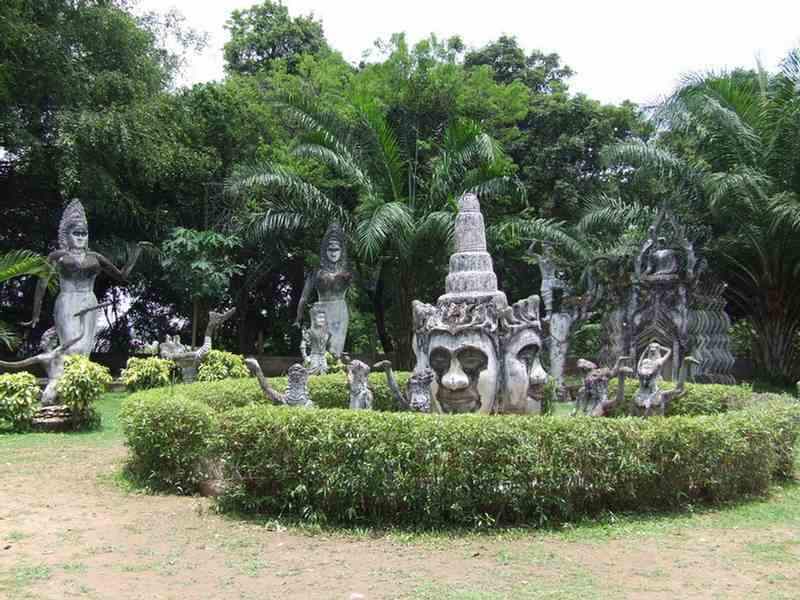
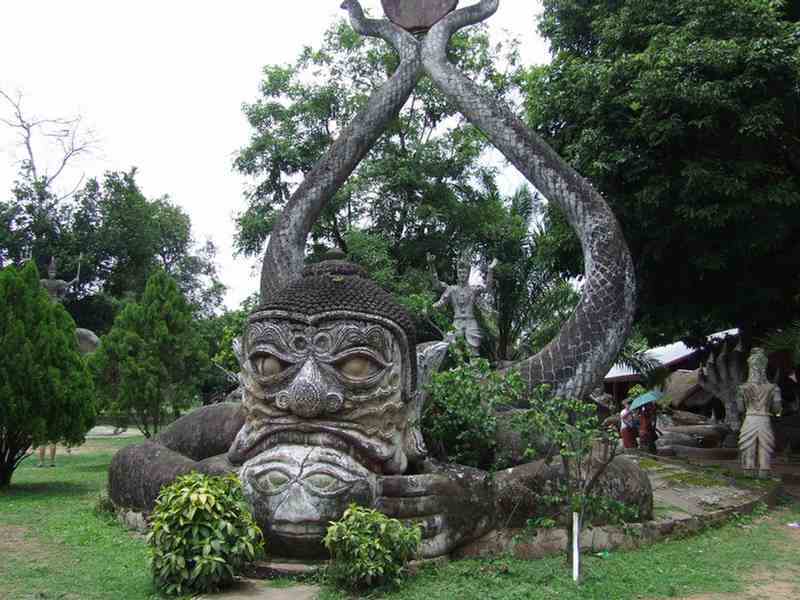
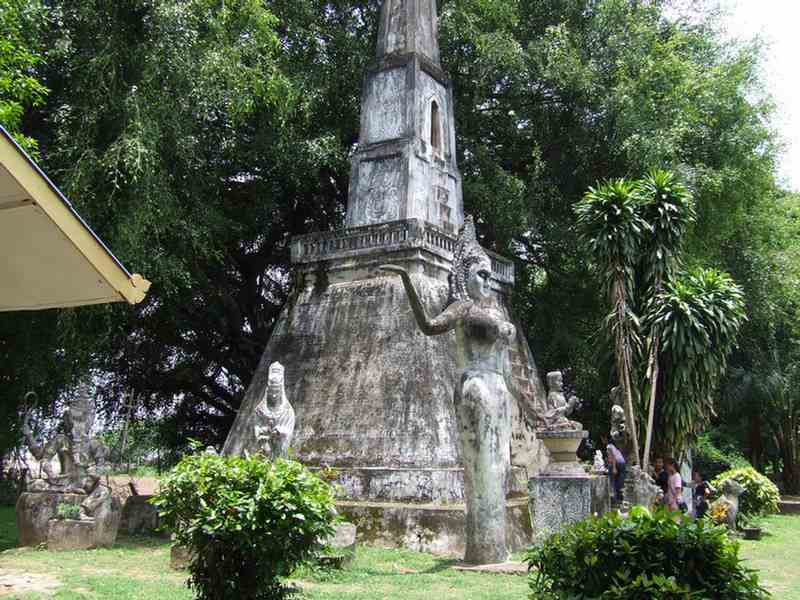
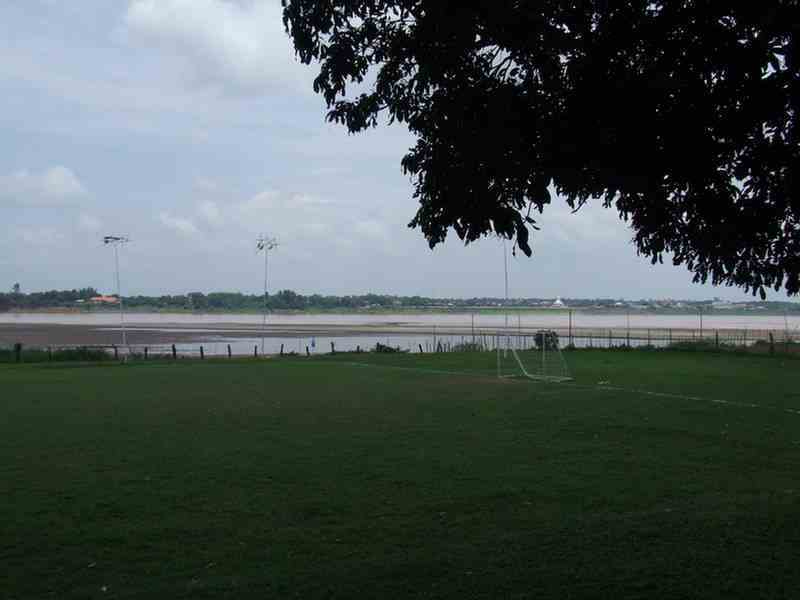
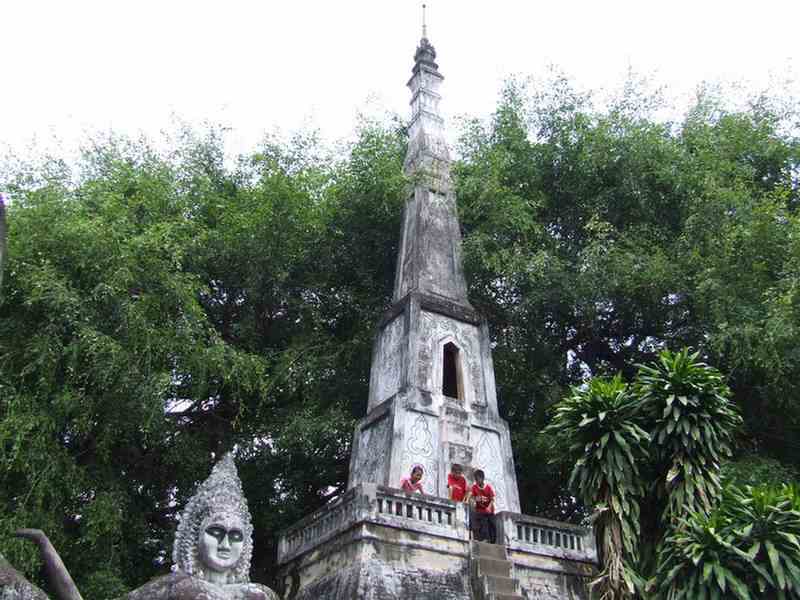
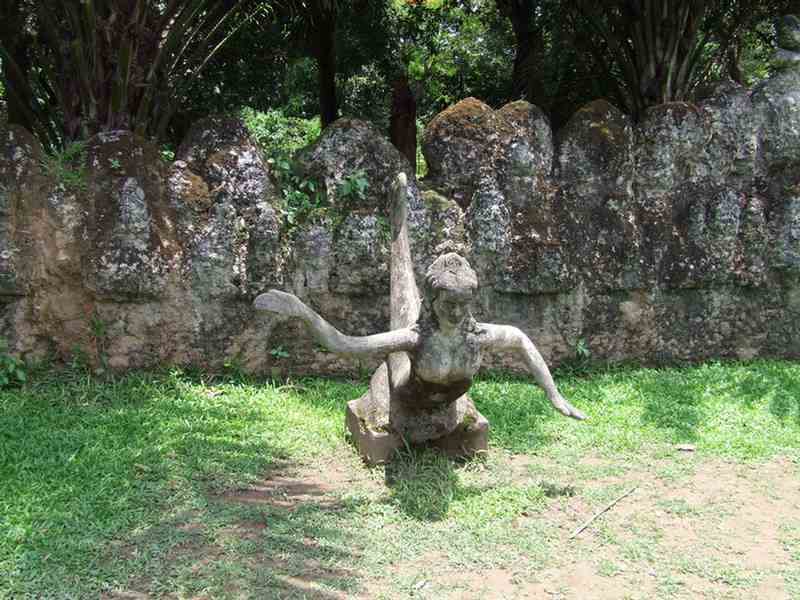

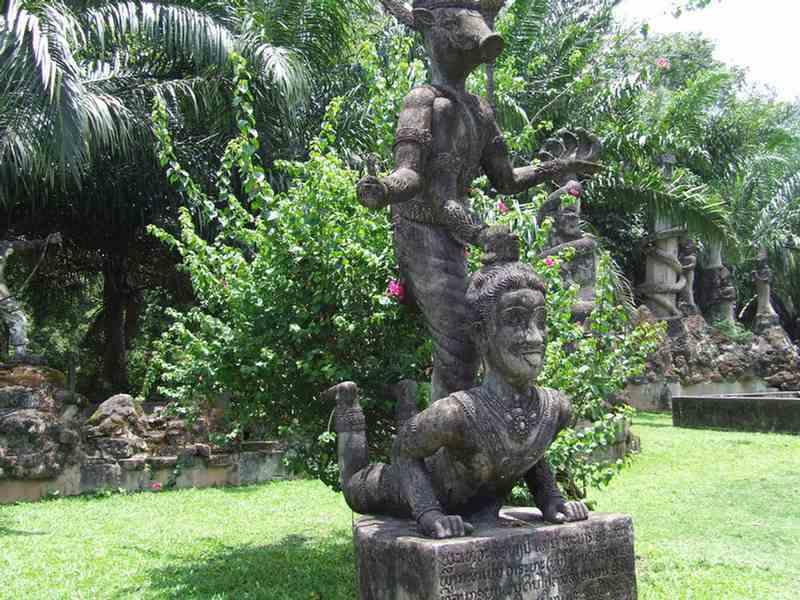
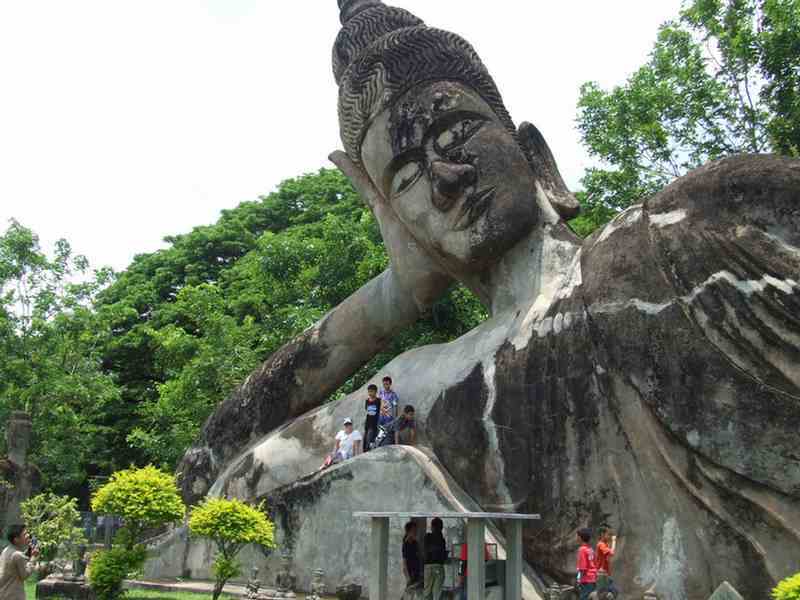
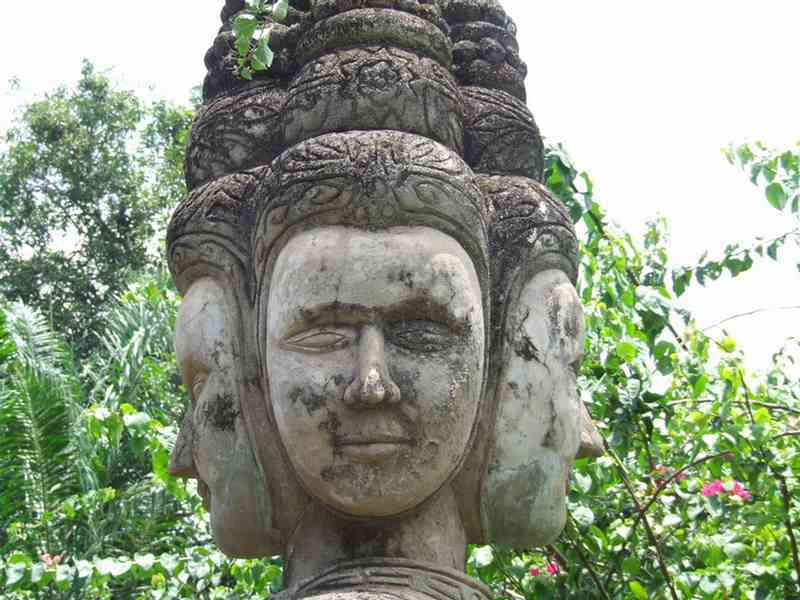
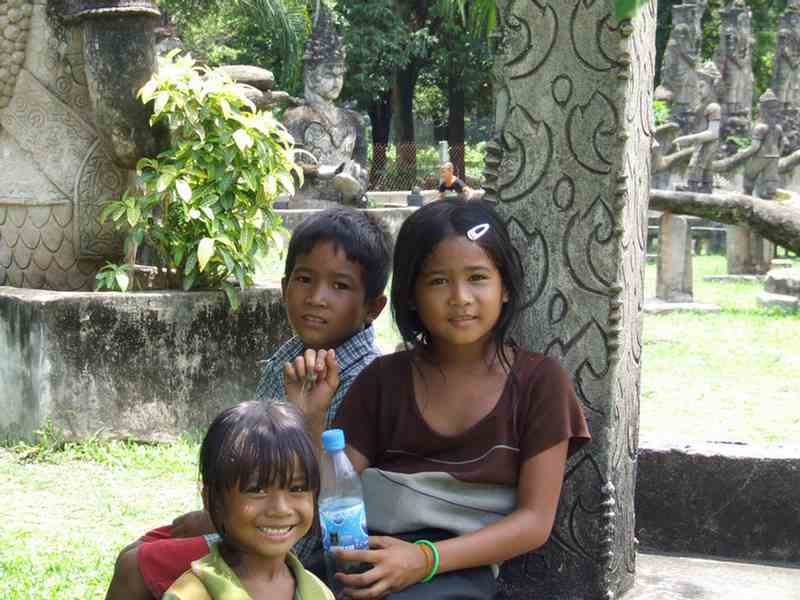
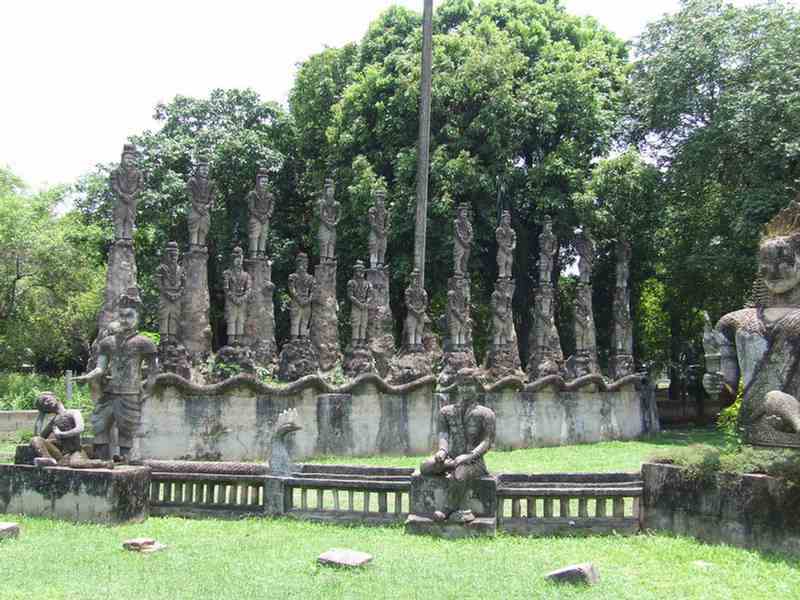
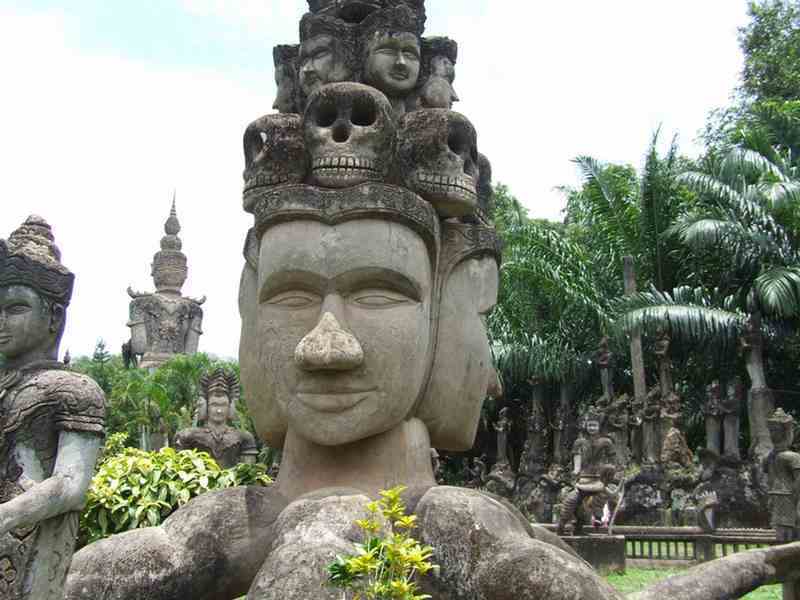
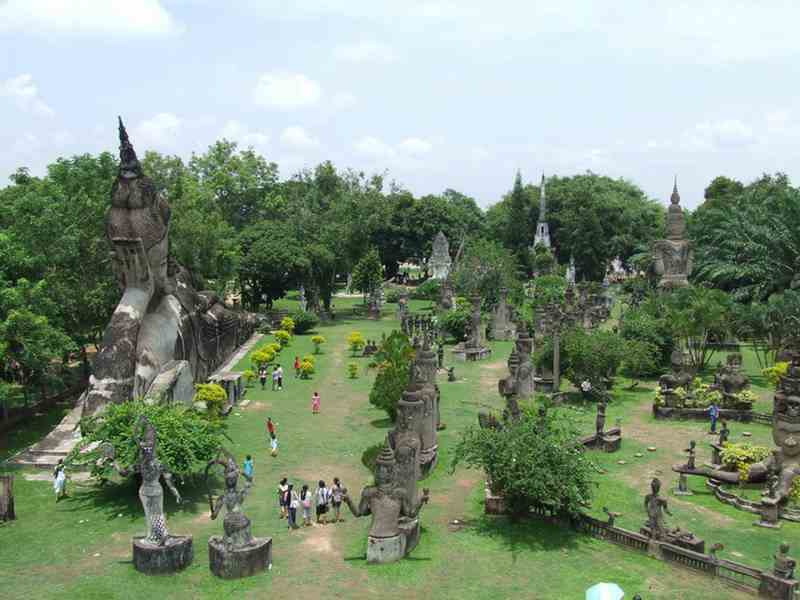
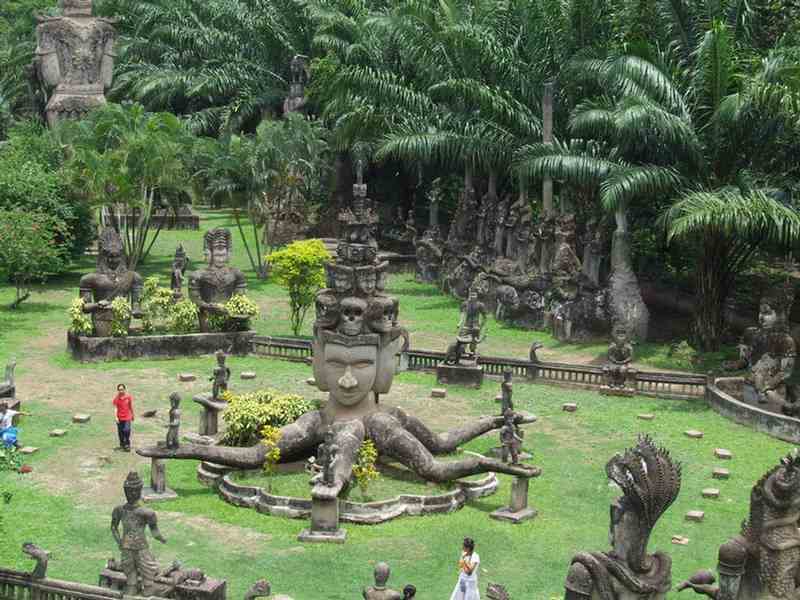
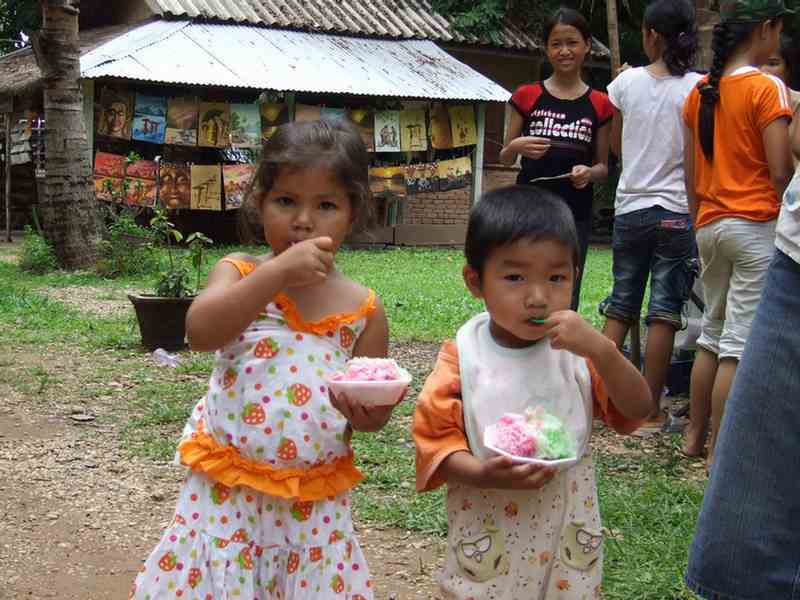
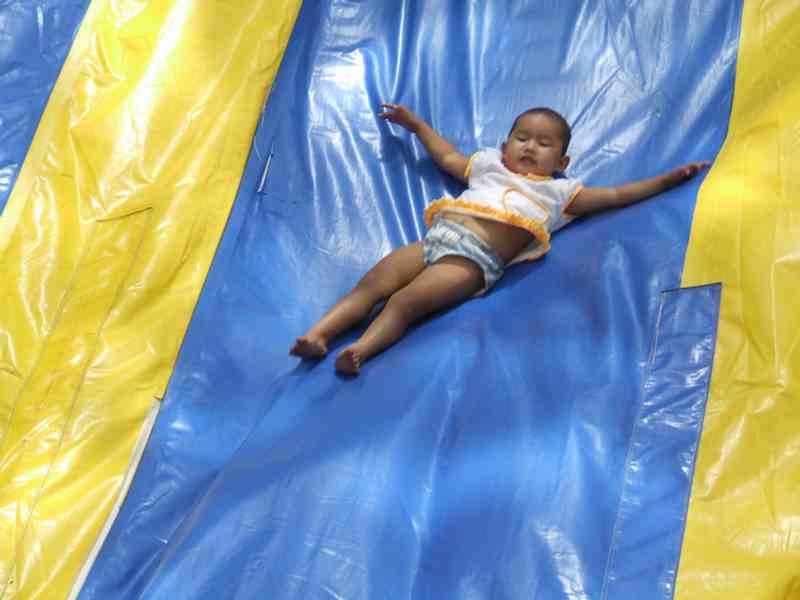
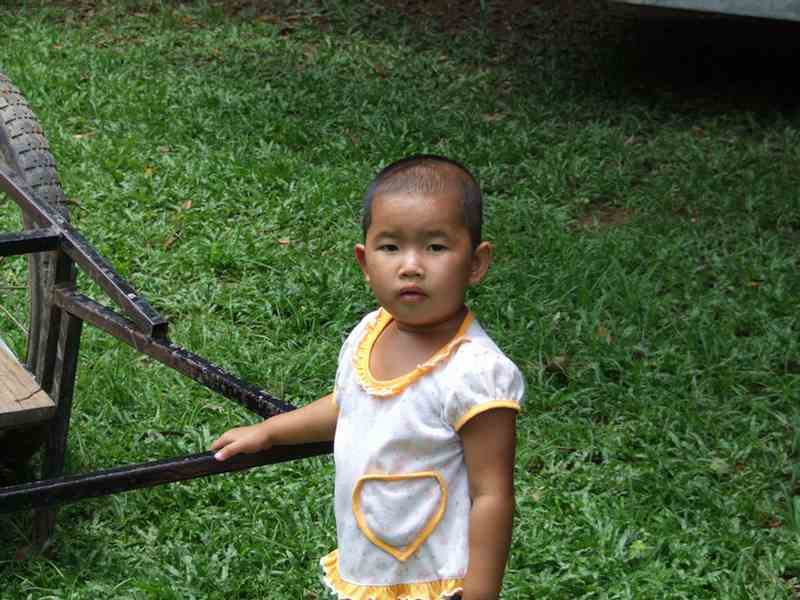
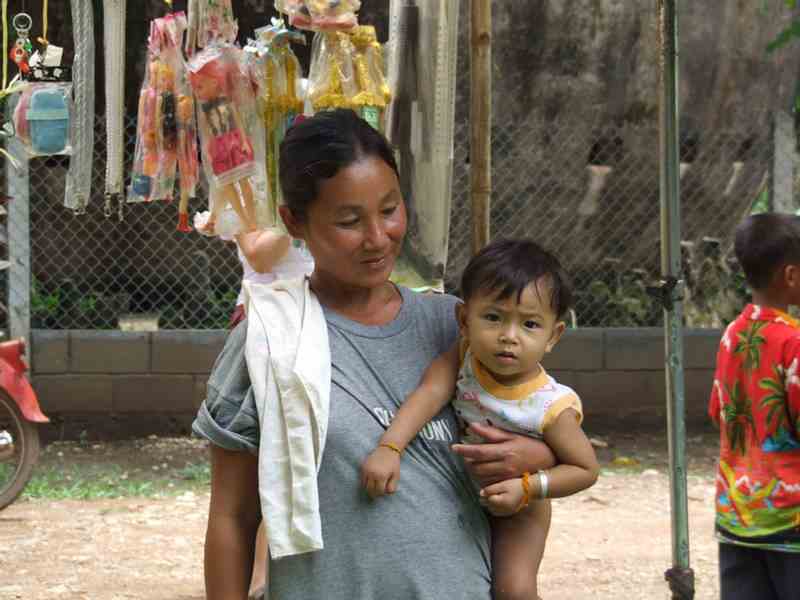
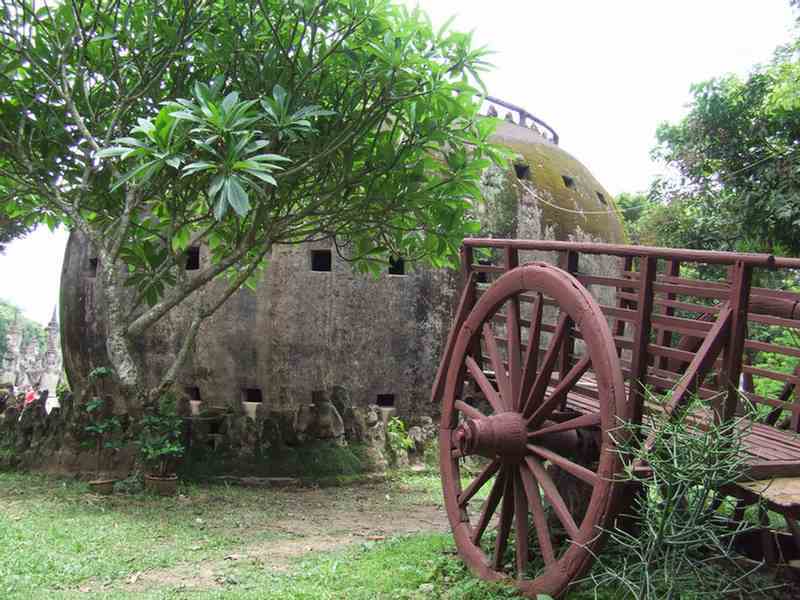
On the way back into Vientiane from Xieng Kuane (The Buddha Park)
we stopped off at the Friendship Bridge (Mittapab Bridge).
The Australian Government funded this bridge that links Laos and Thailand over the Mekong River.
It was constructed in 1991-94 by John Holland Constructions.

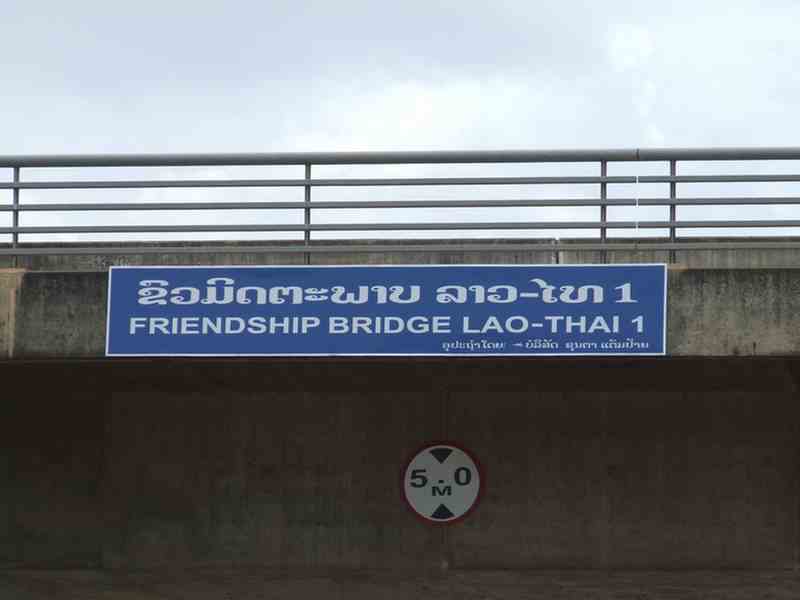
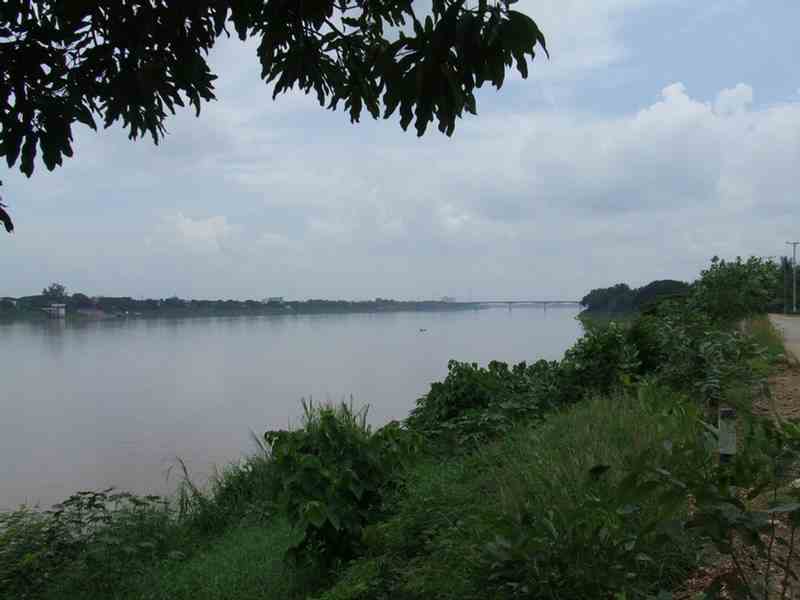
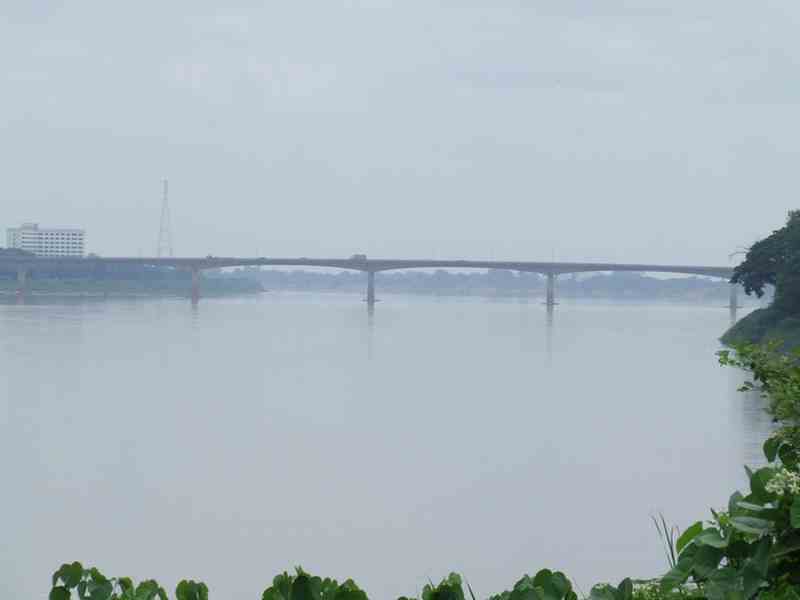
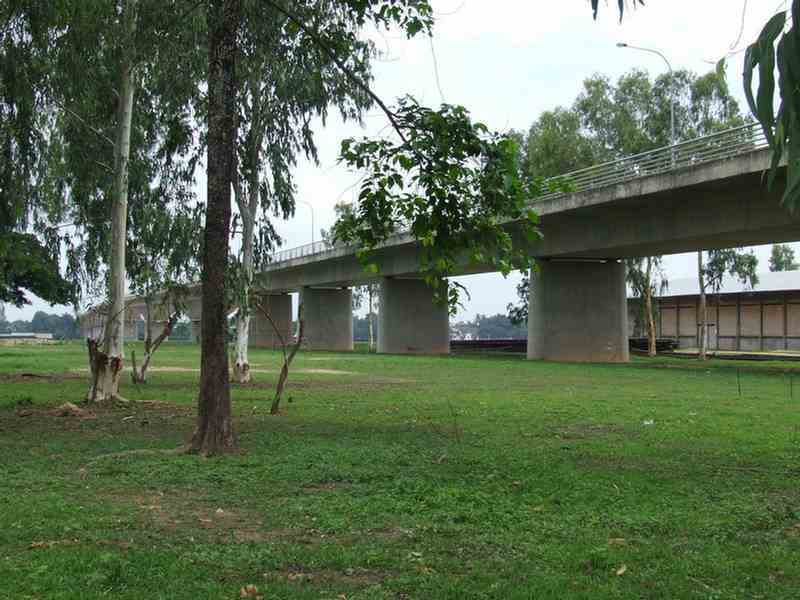
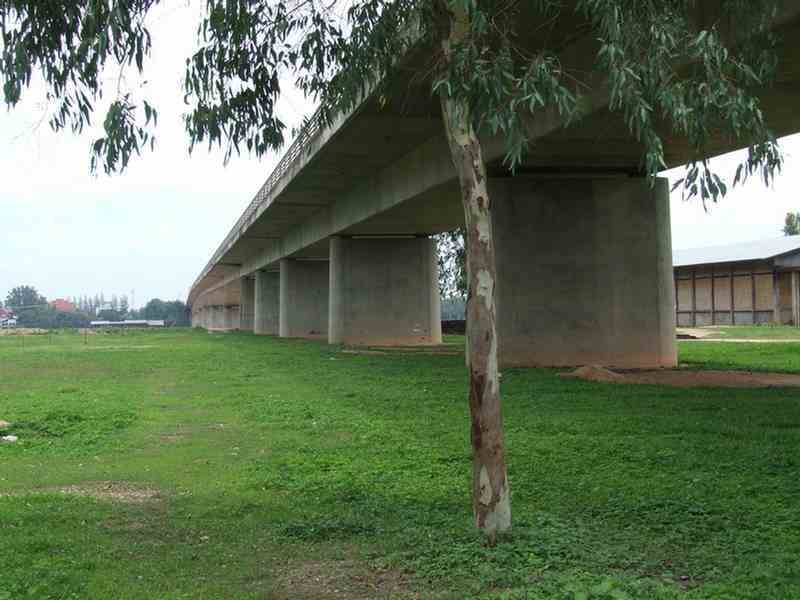
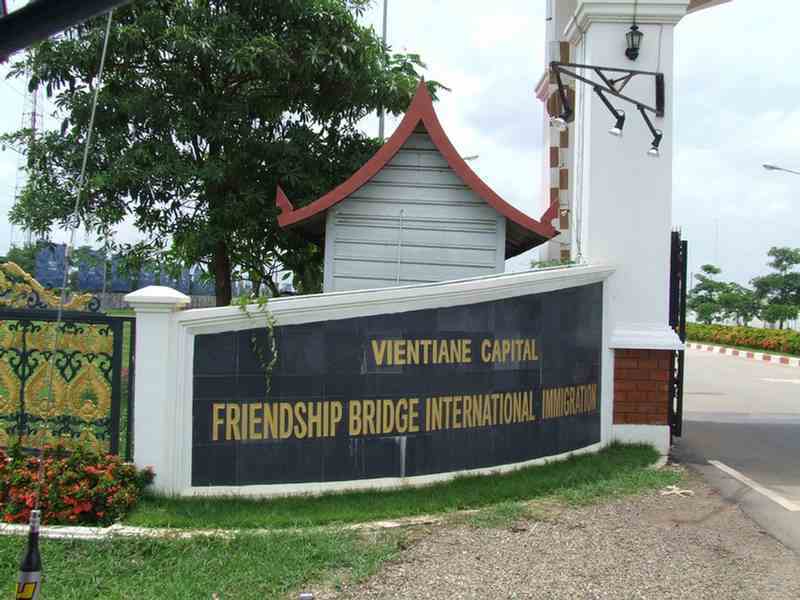
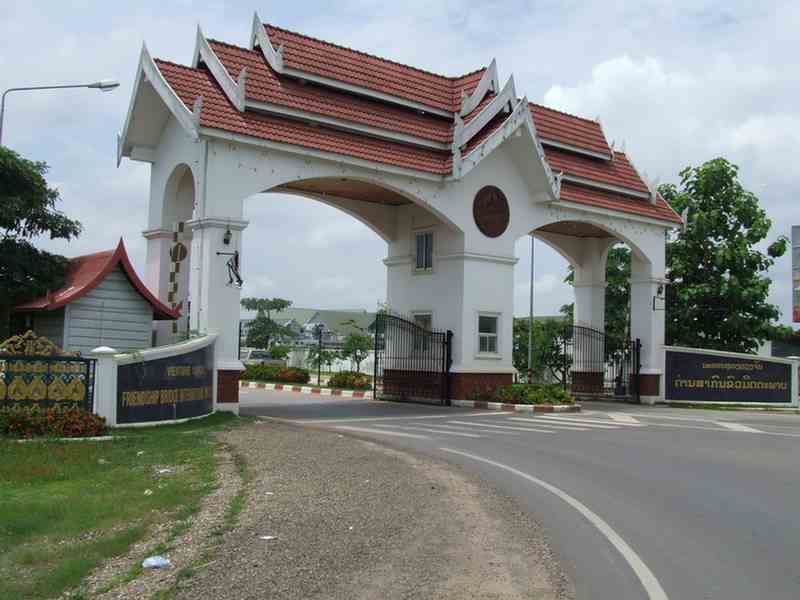

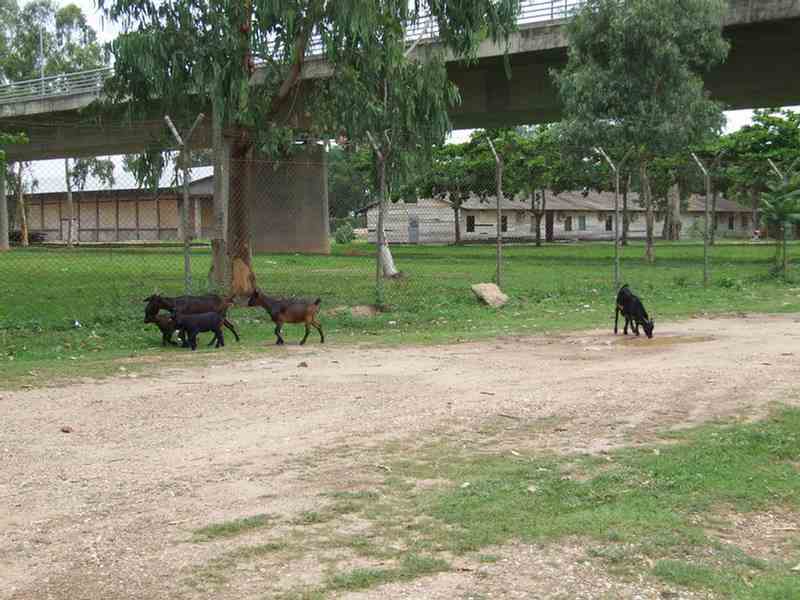
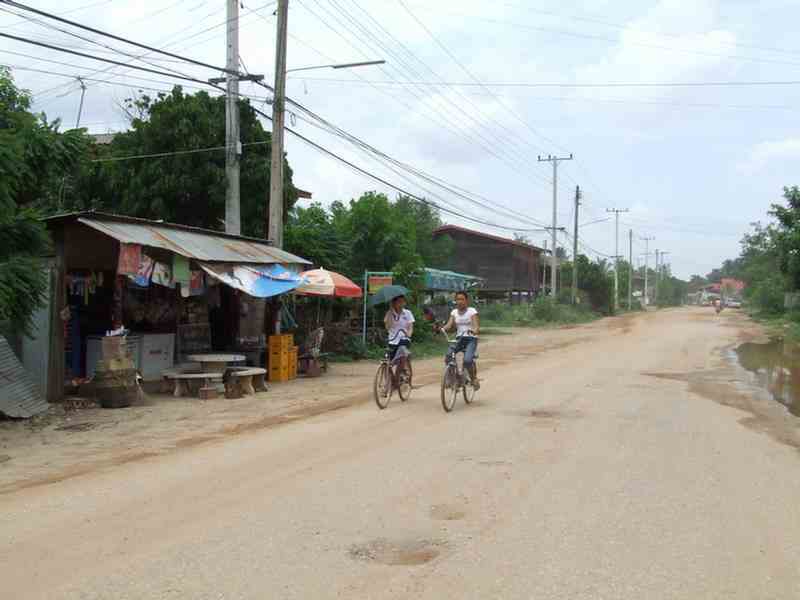

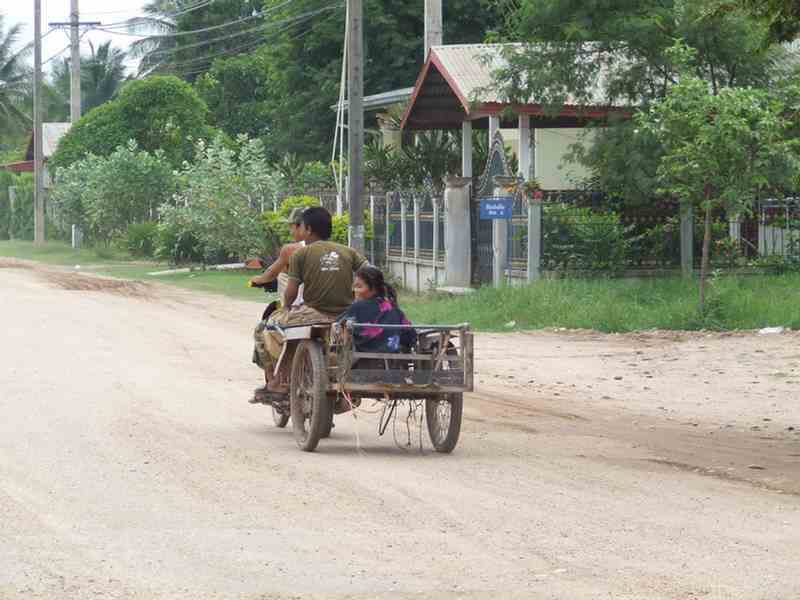

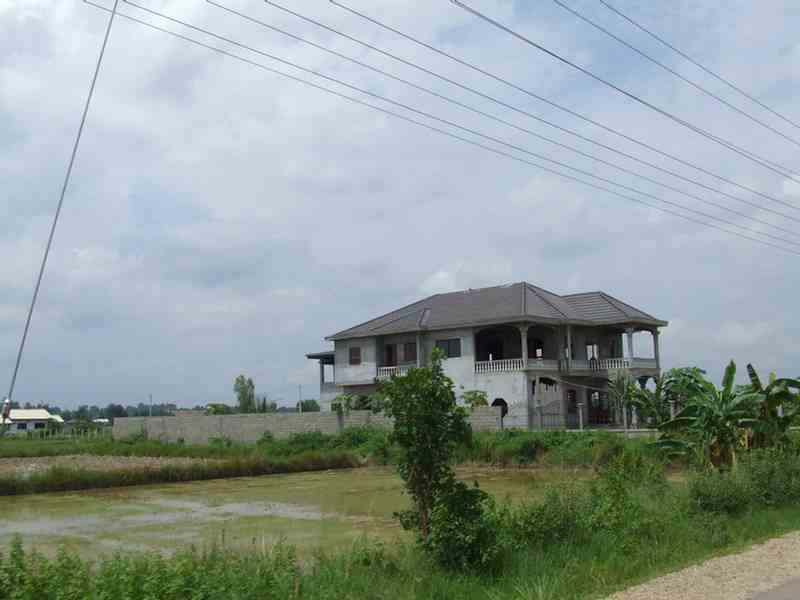
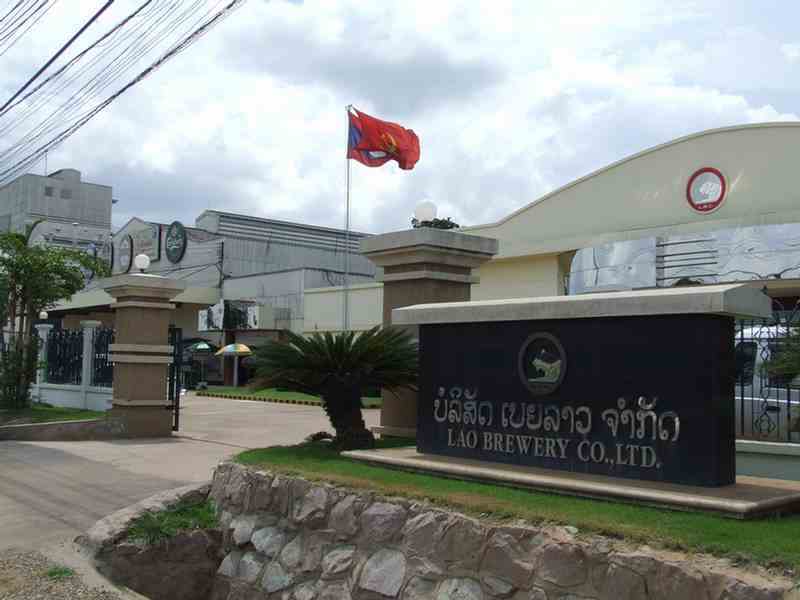
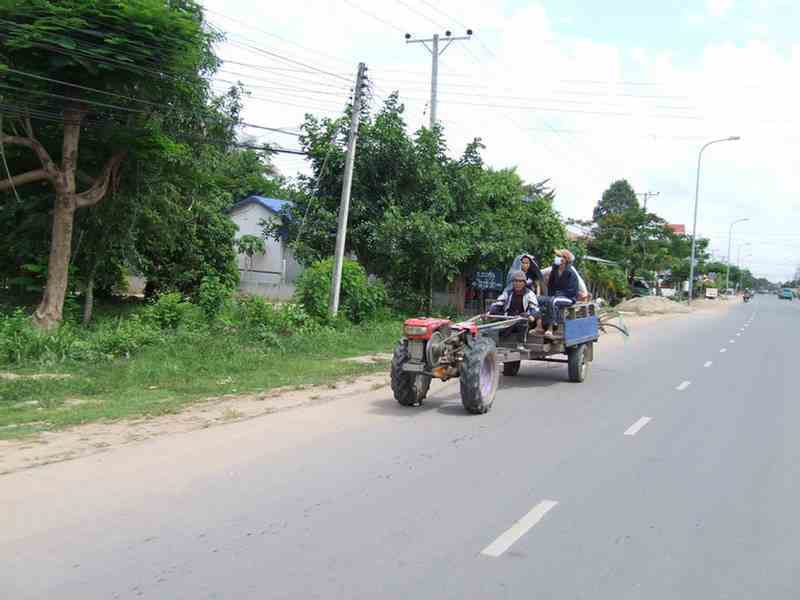
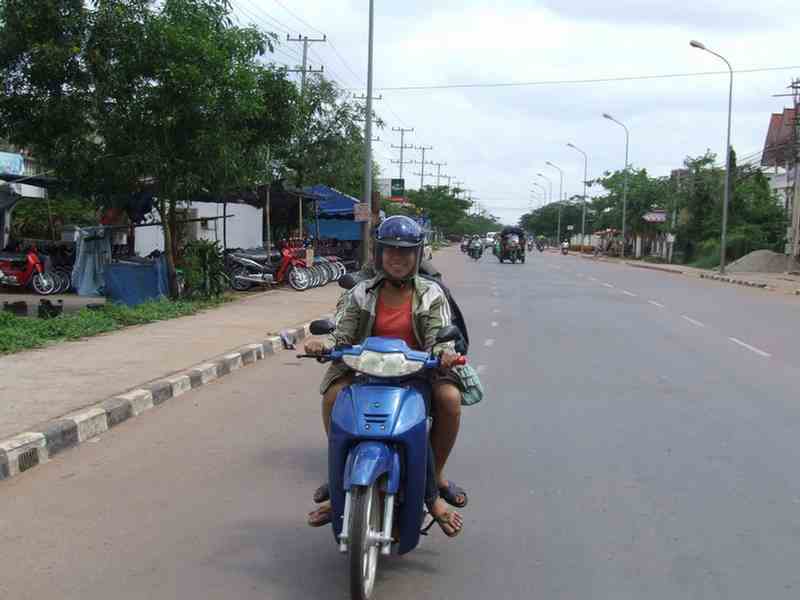
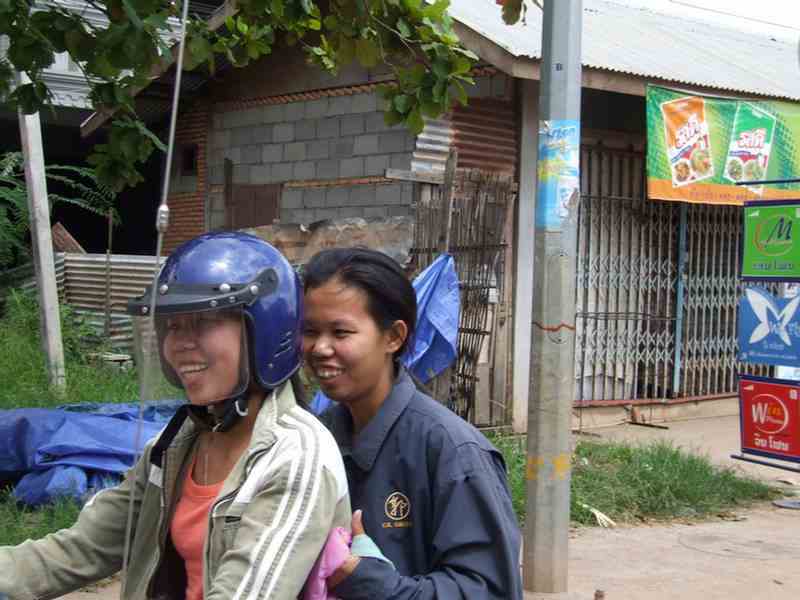
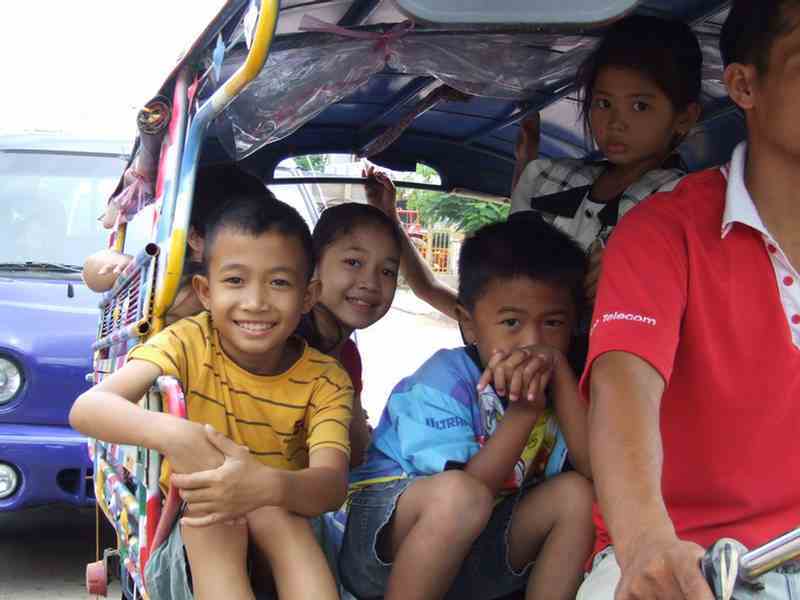
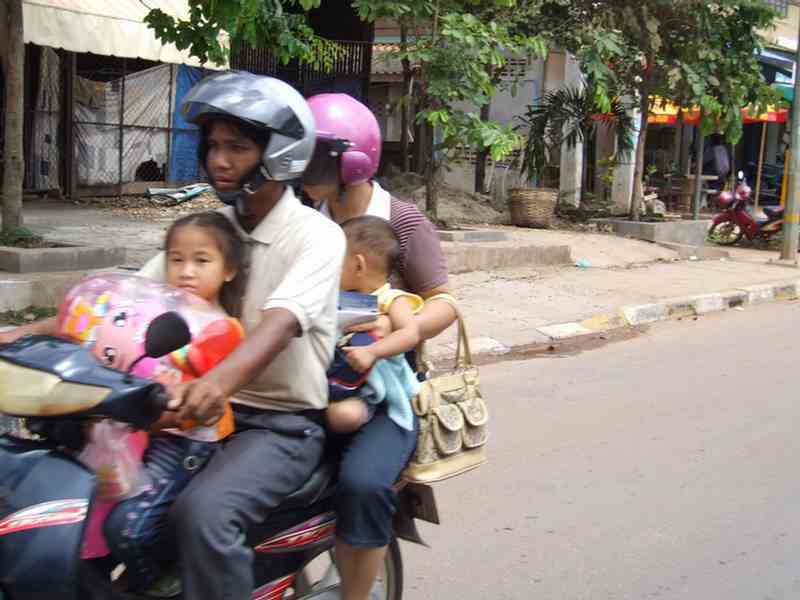
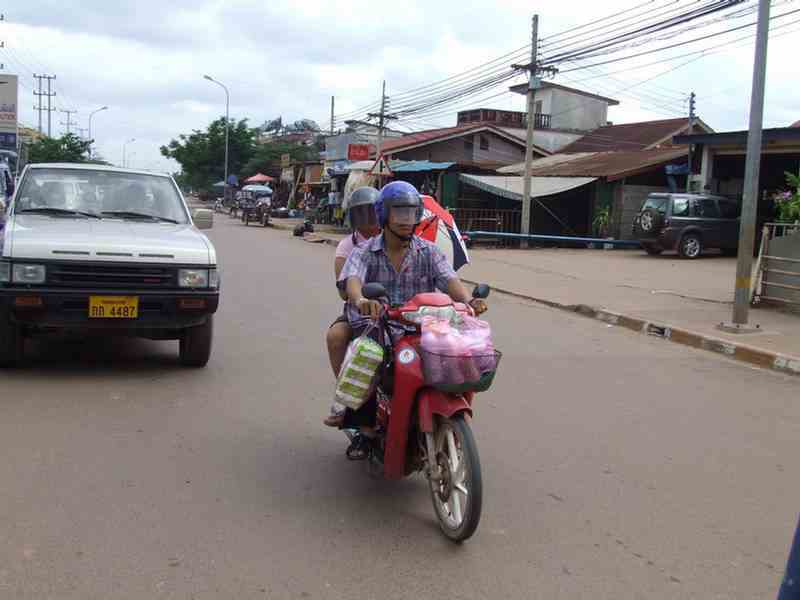
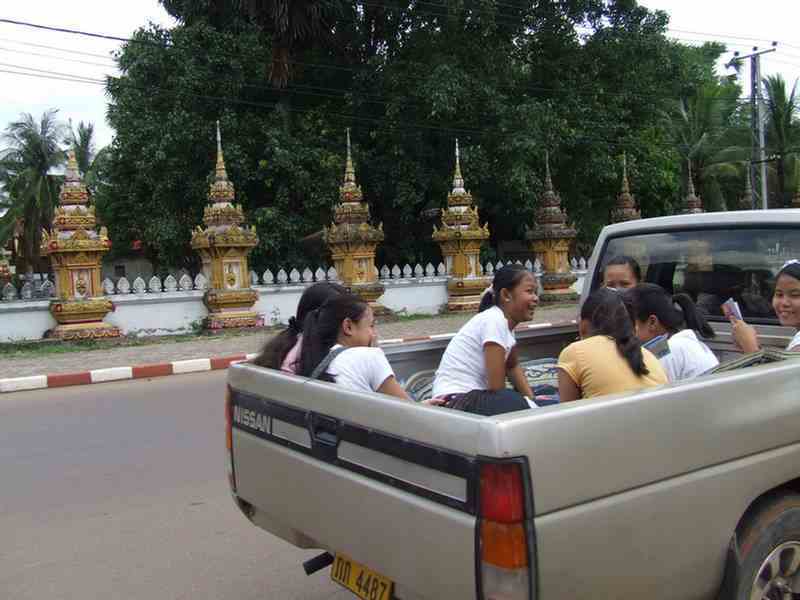
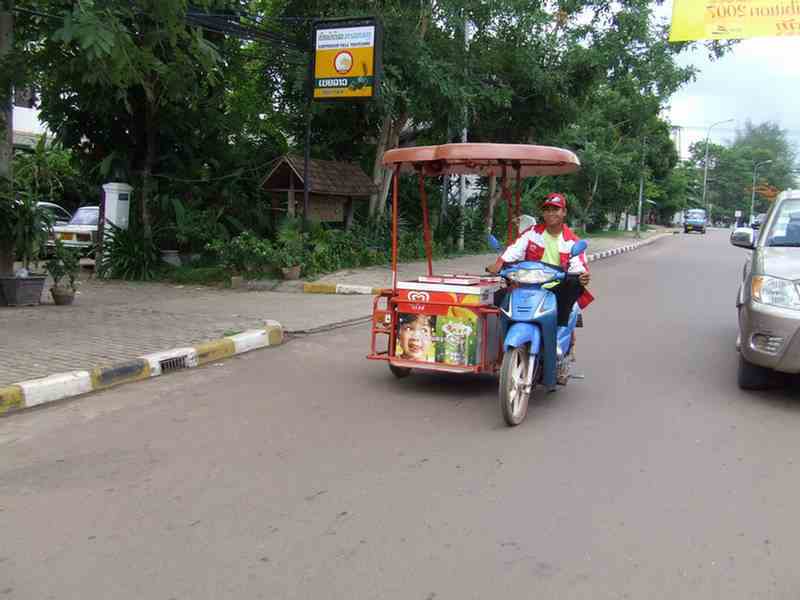
Patuxai
This is Vientiane's haughty Arc de Triomphe replica, built in a Lao architectural style.
It is an imposing, if slightly incongrous sight and it commemorates the Lao people who died in the pre-revolutionary wars.
It was built in 1969 with cement donated for the construction of a new airport, hence expats refer to it as a vertical runway.

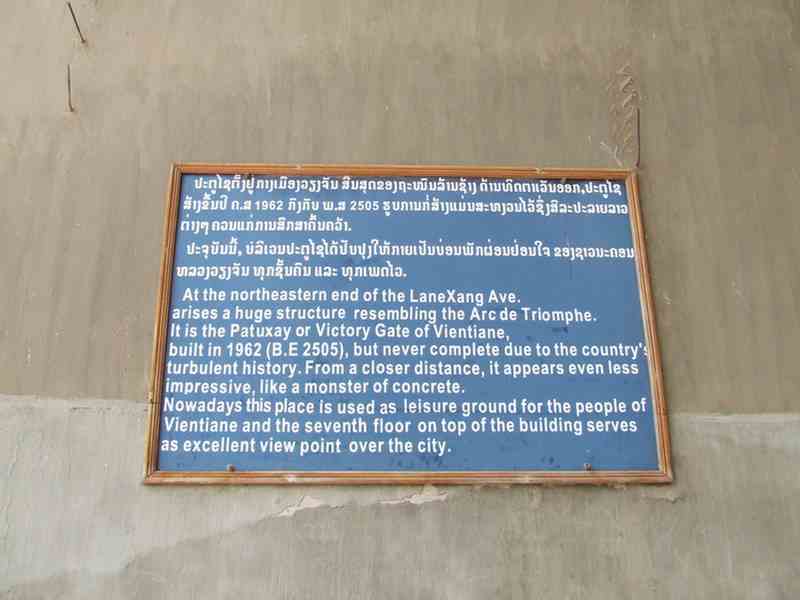
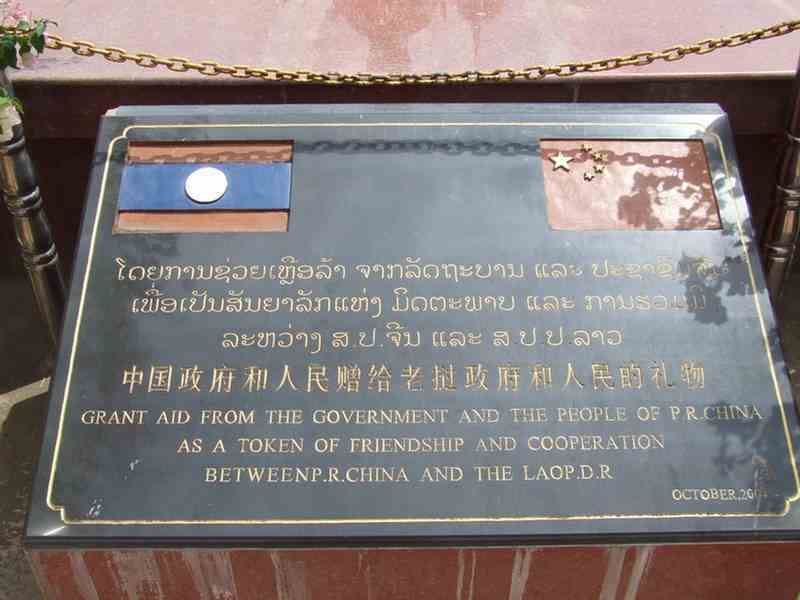
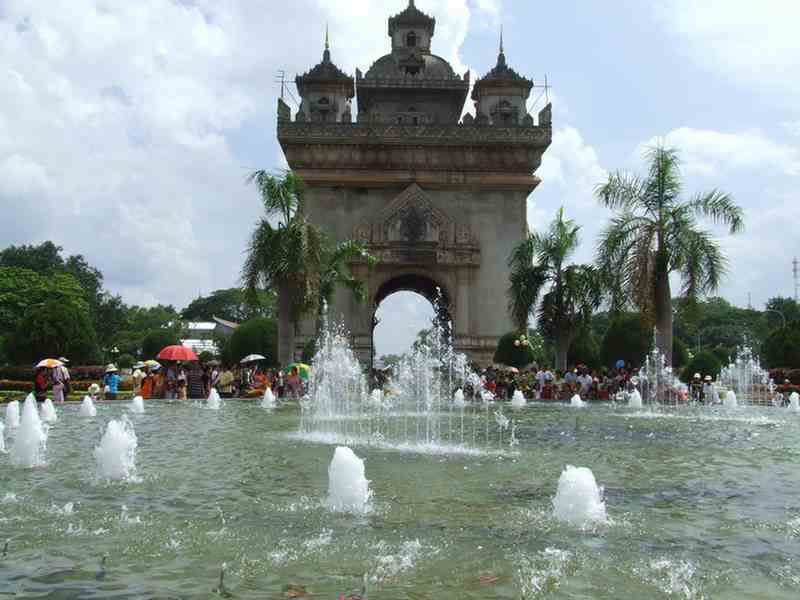
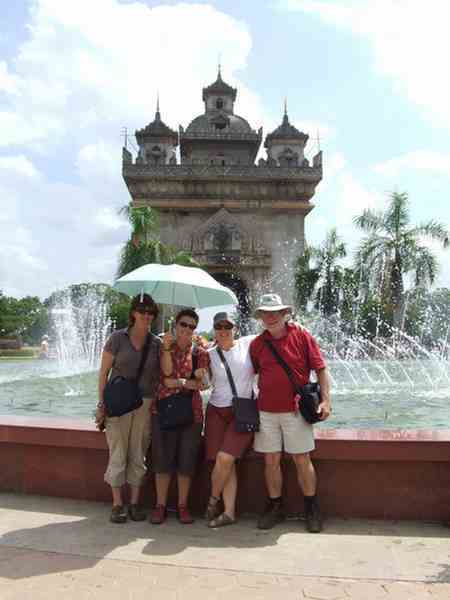

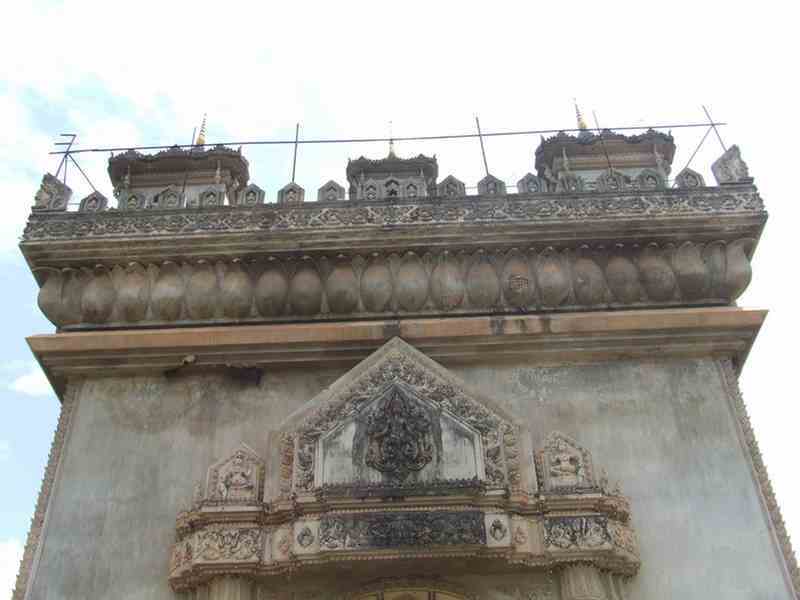
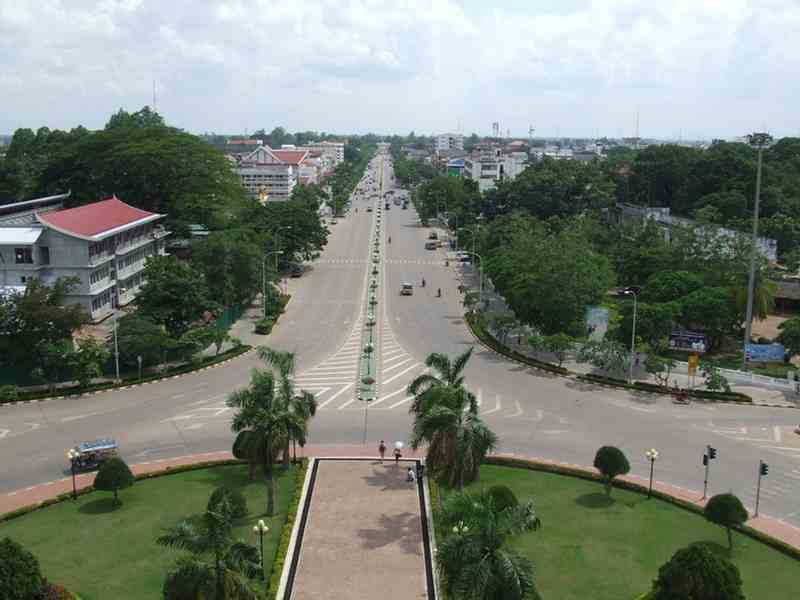
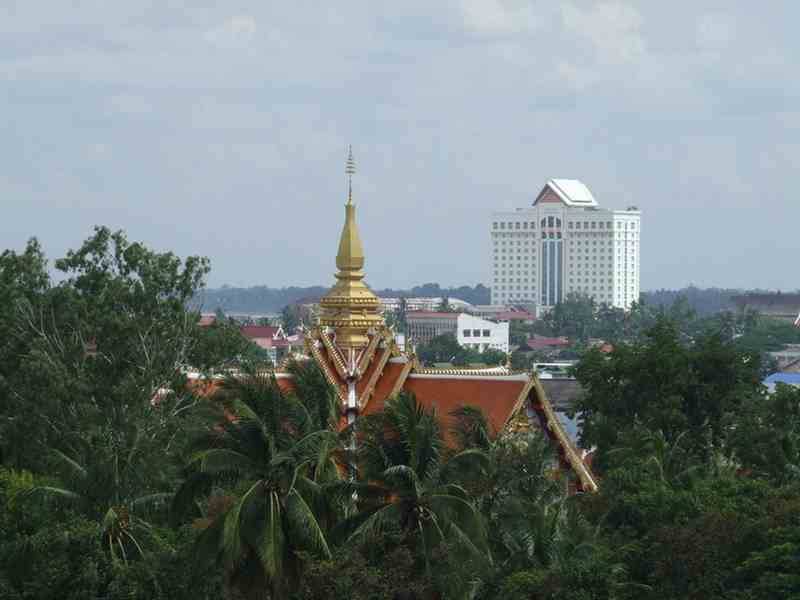
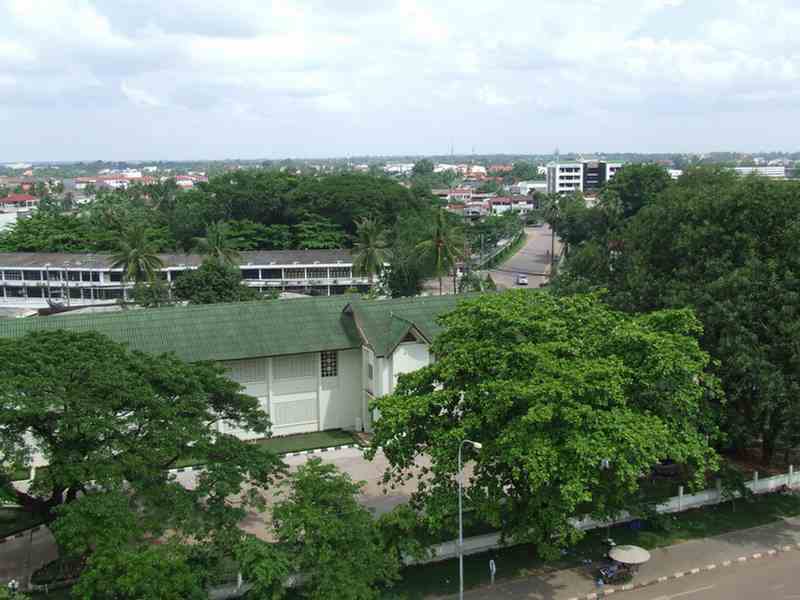
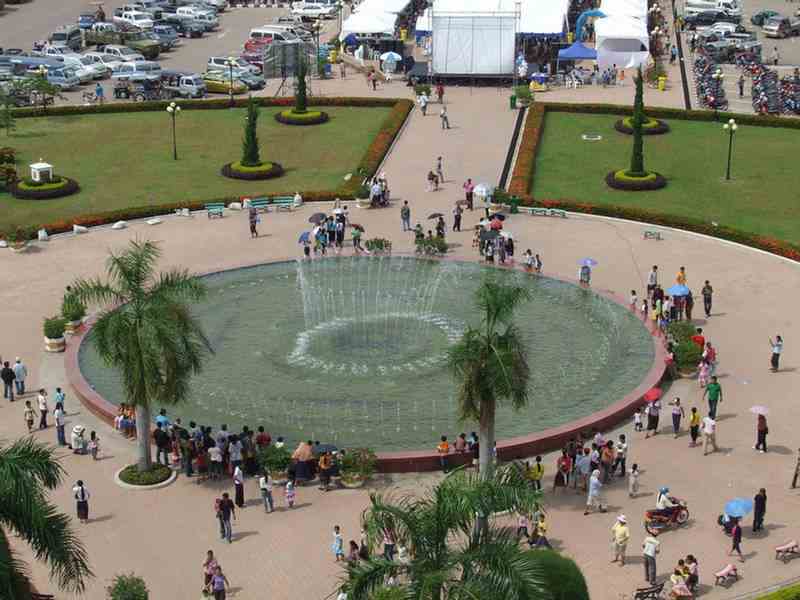
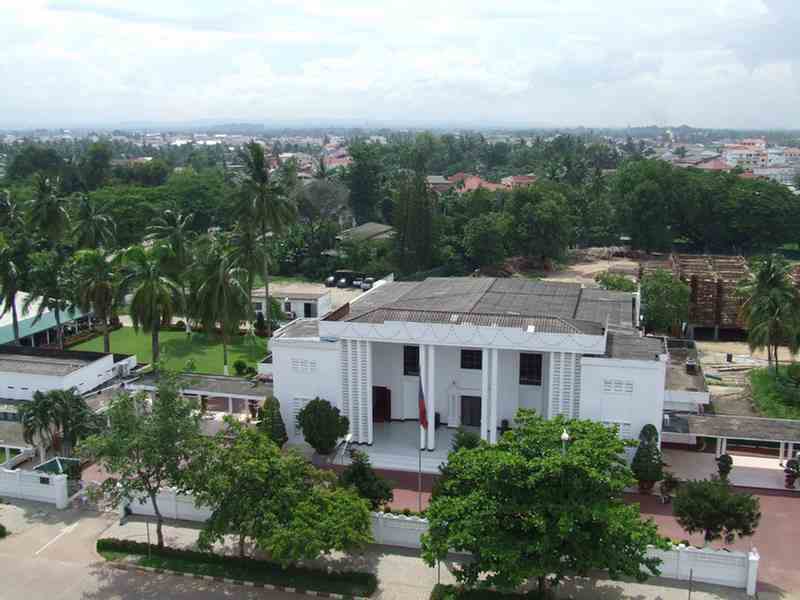
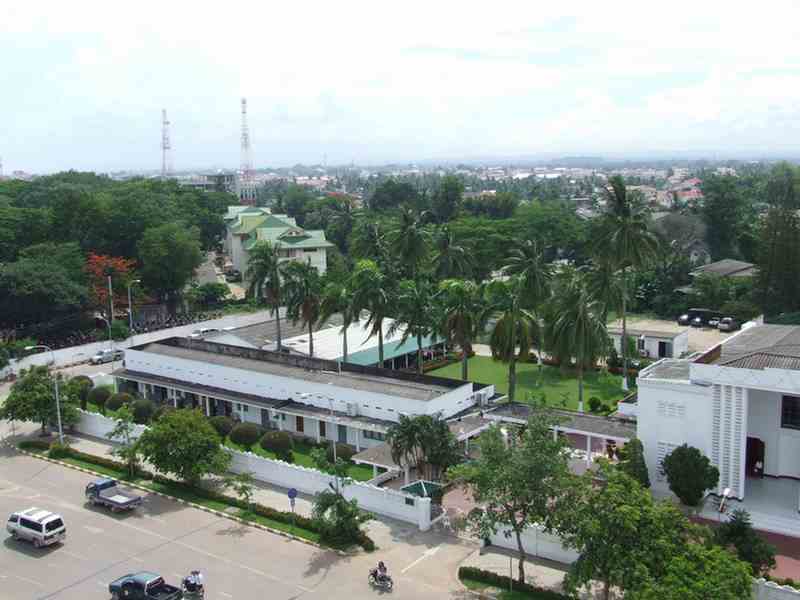
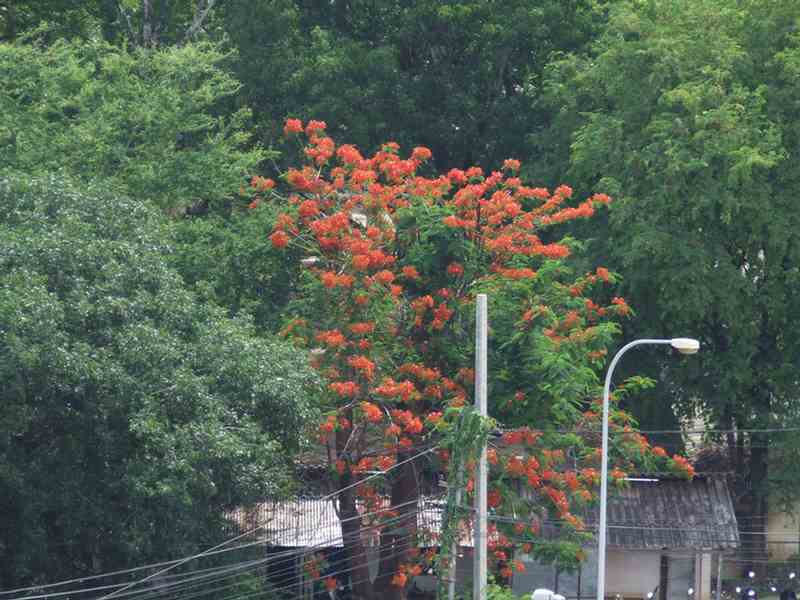
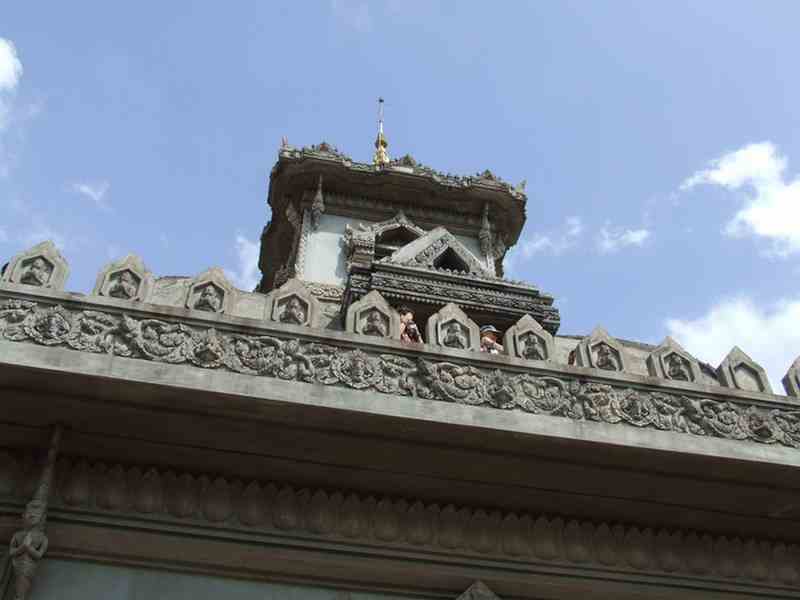
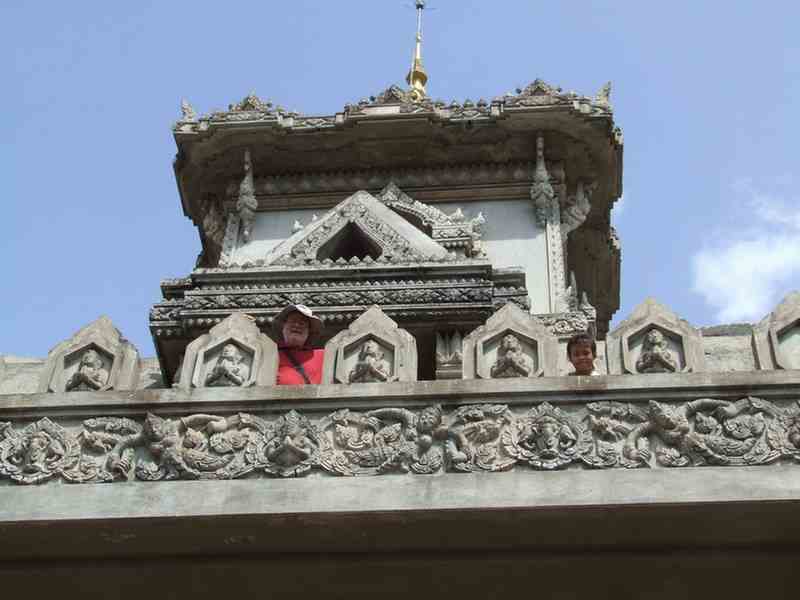
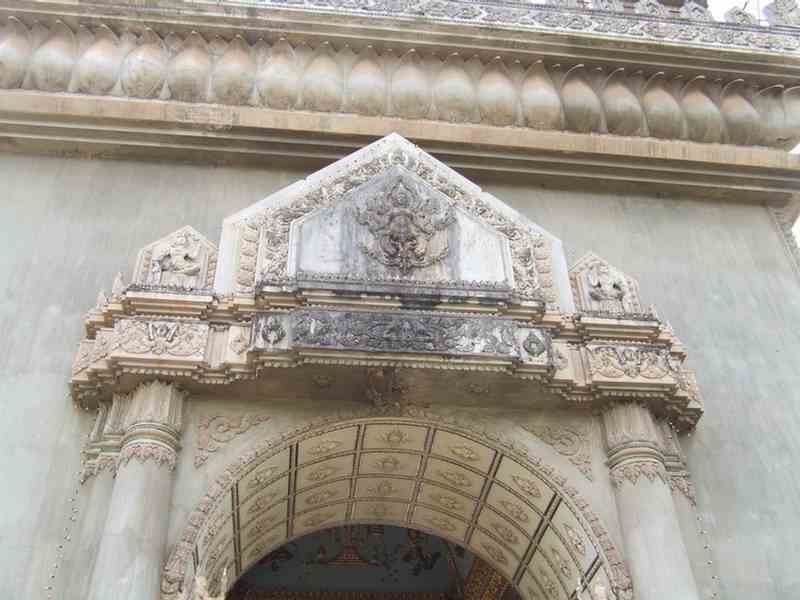
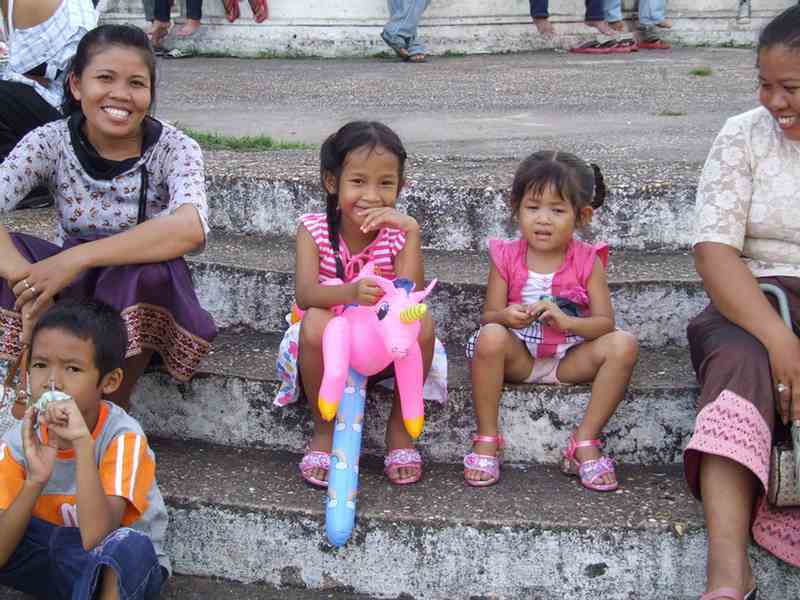
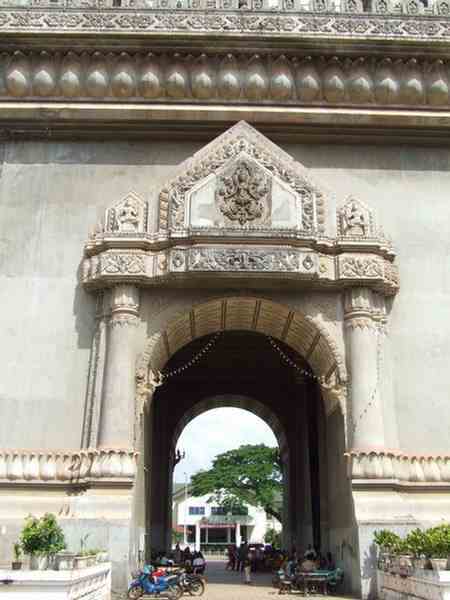

There was a children's festival being held in large marquees nearby
and we saw a lovely display of traditional dance by Lao children.
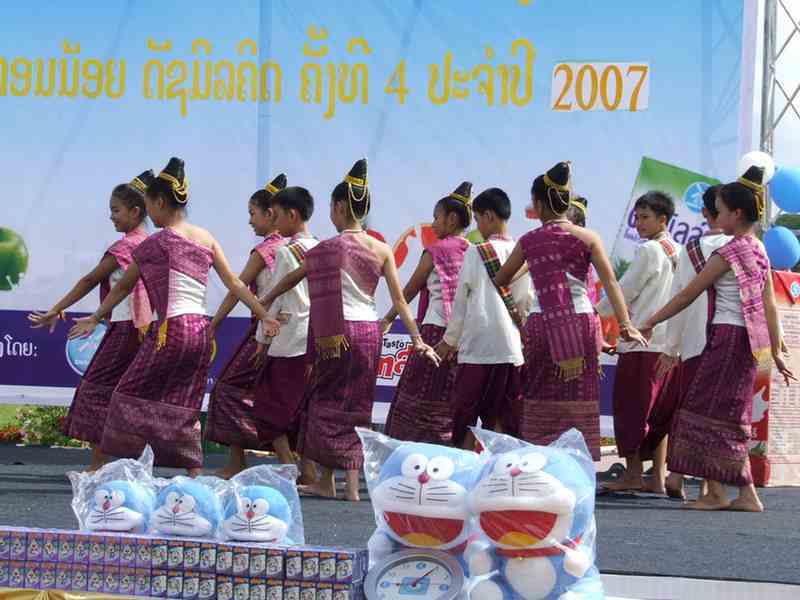
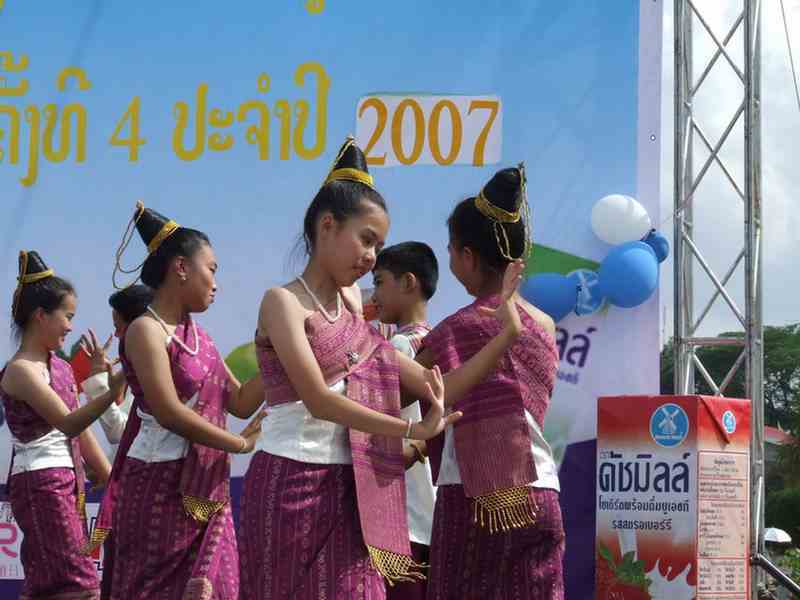
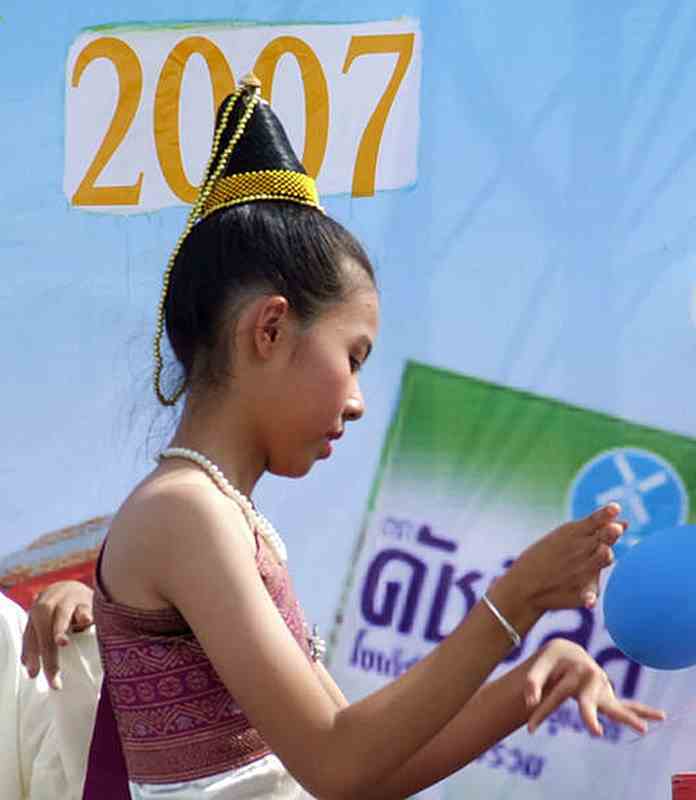
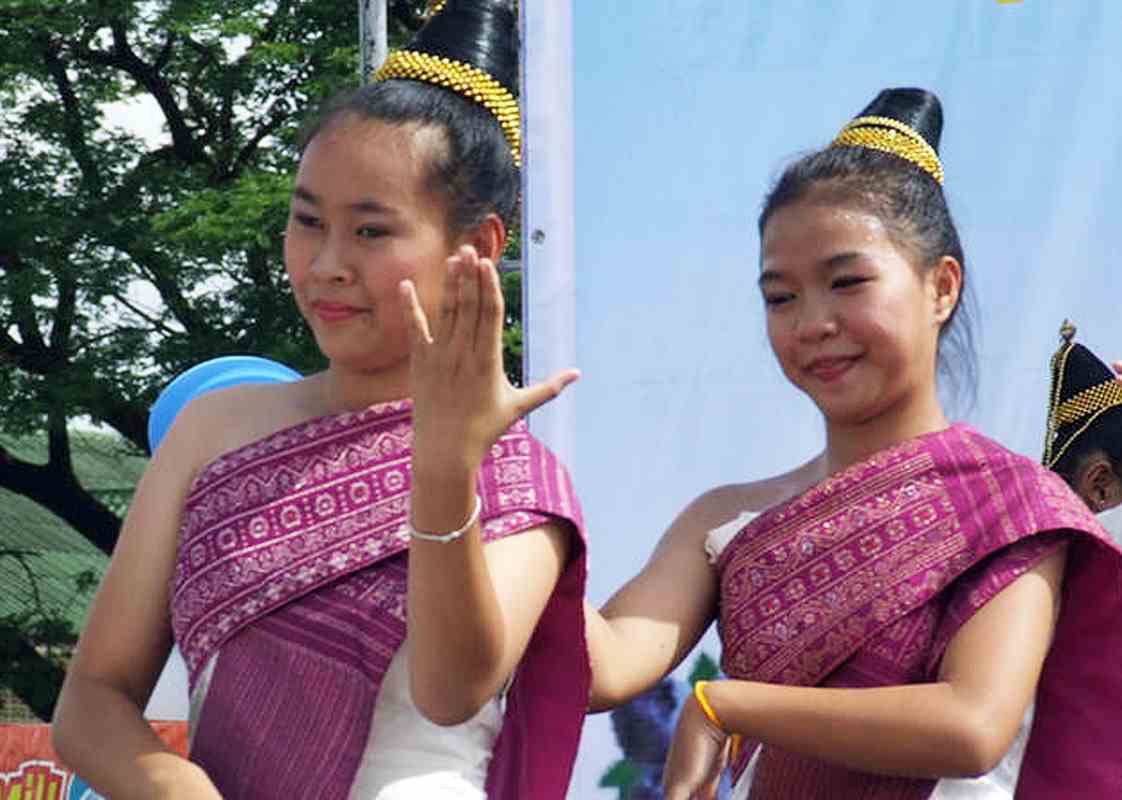
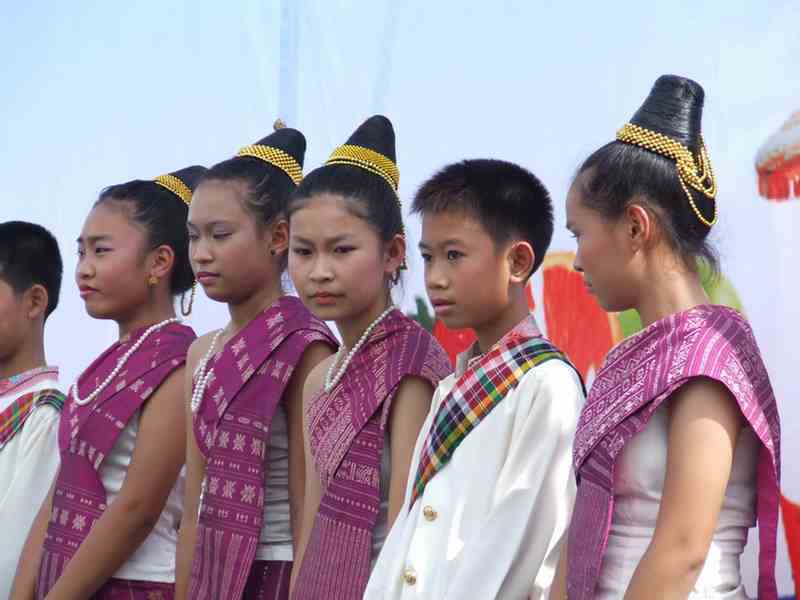
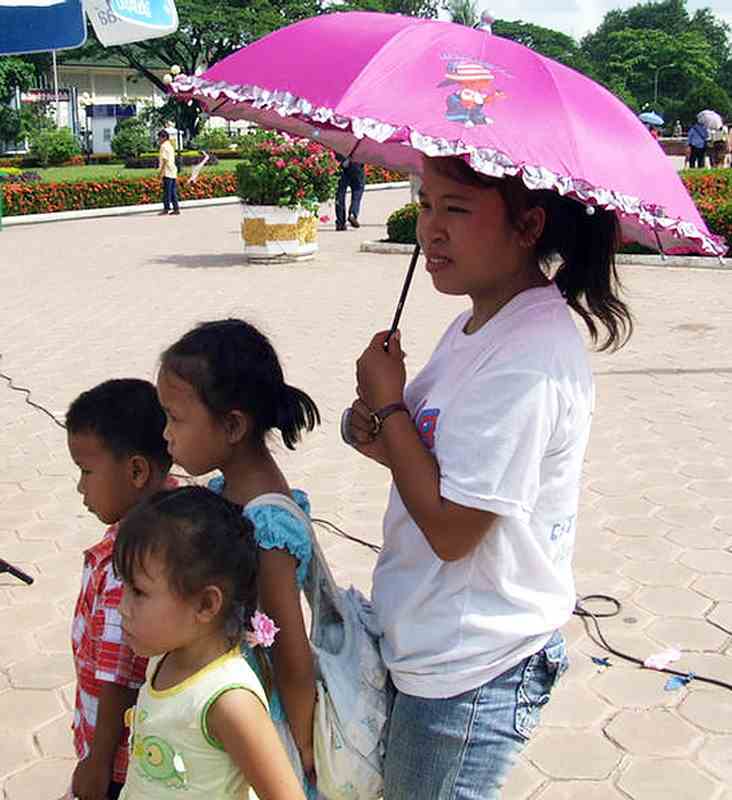
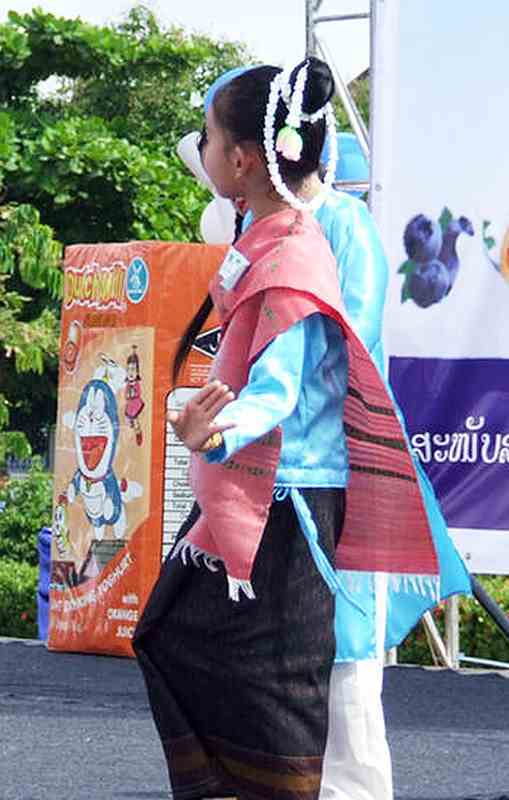
Vientiane, the capital of Loas, is a sleepy city. It is not the most attractive city in SE Asia.
Many people have called Vientianne, Asia's largest village.
It is however, hectic, compared with the rest of Laos.
The population is over half a million people.
Pronounced Wieng Chan (Wieng meaning city or place within the walls in Lao,
Chan is the Lao term of the Sanskrit Chandra)
and hence the city name translates to Sandalwood City.
It was the French who gave the city its present day spelling.
The French made it the capital of the protectorship in the late 19th Century.
The Pathet Lao briefly considered moving the capital to Vieng Xai.
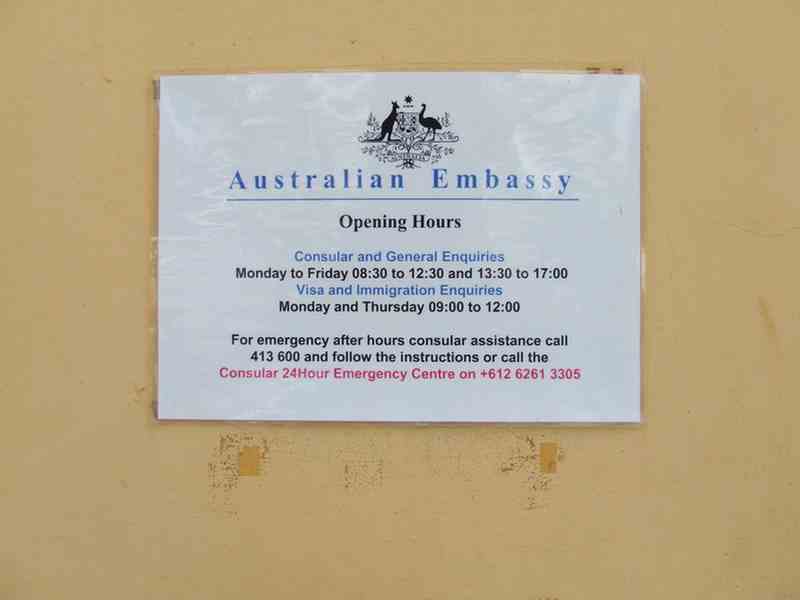
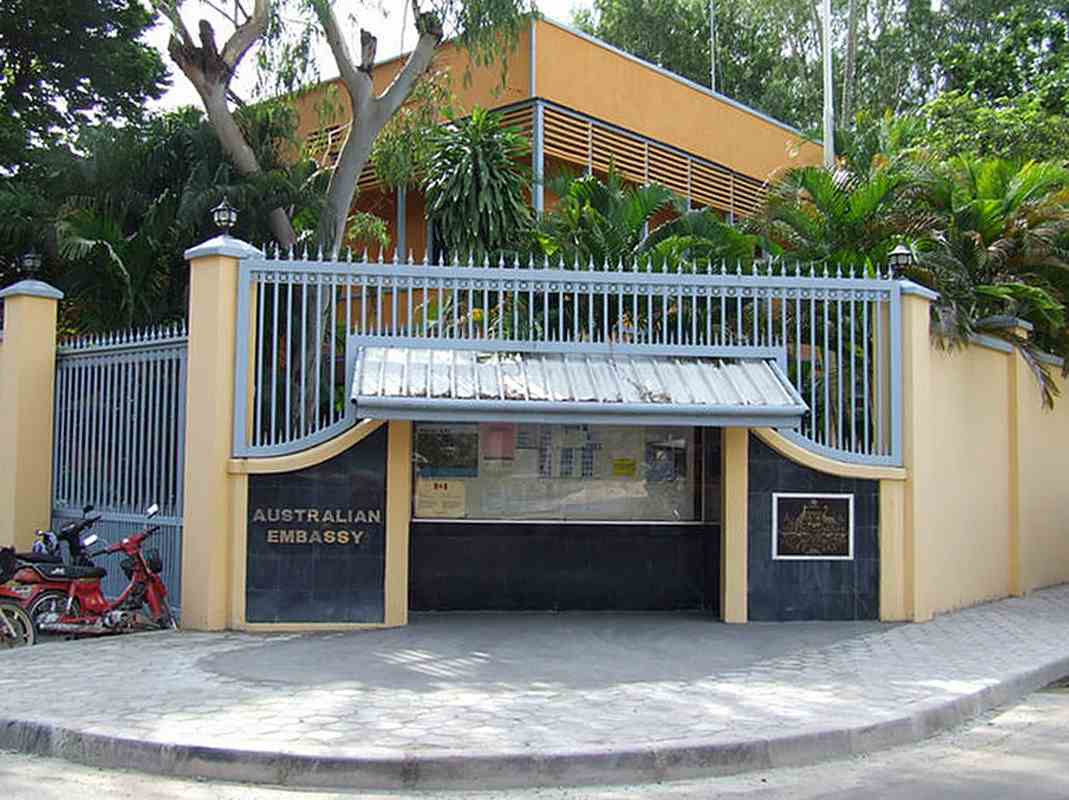
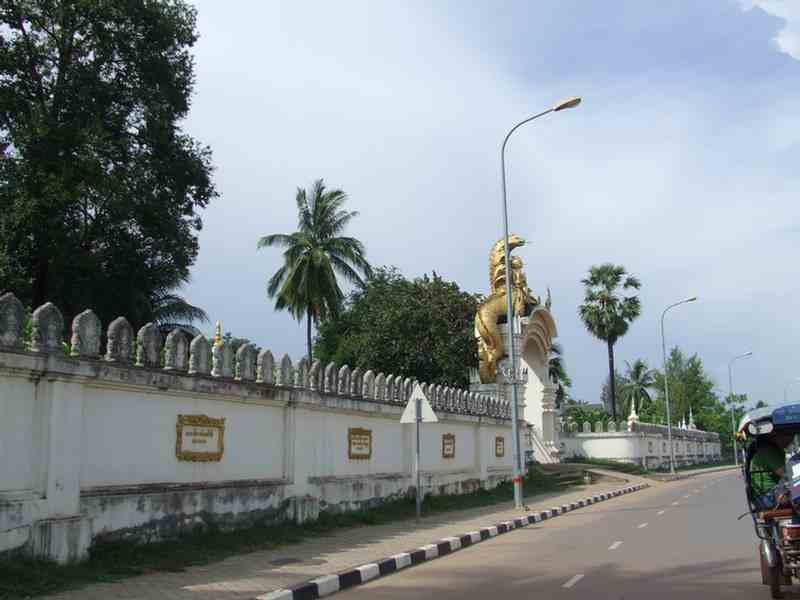
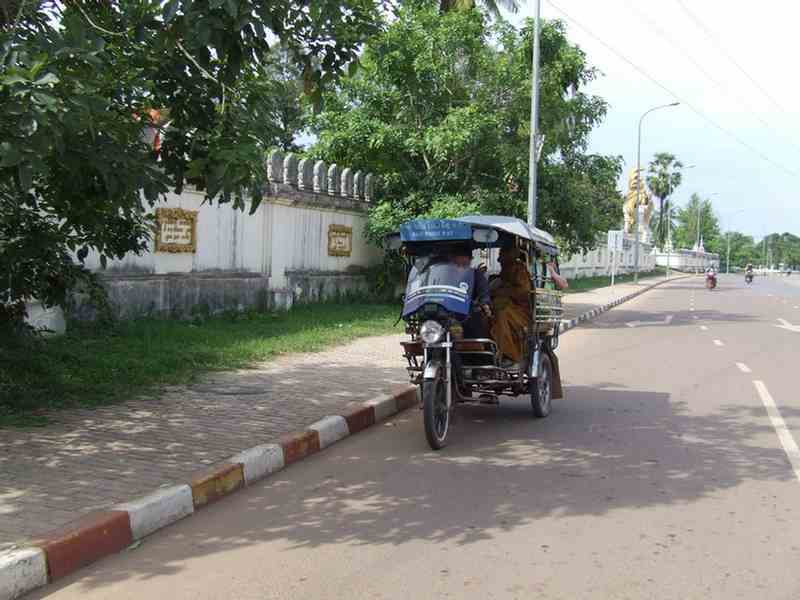
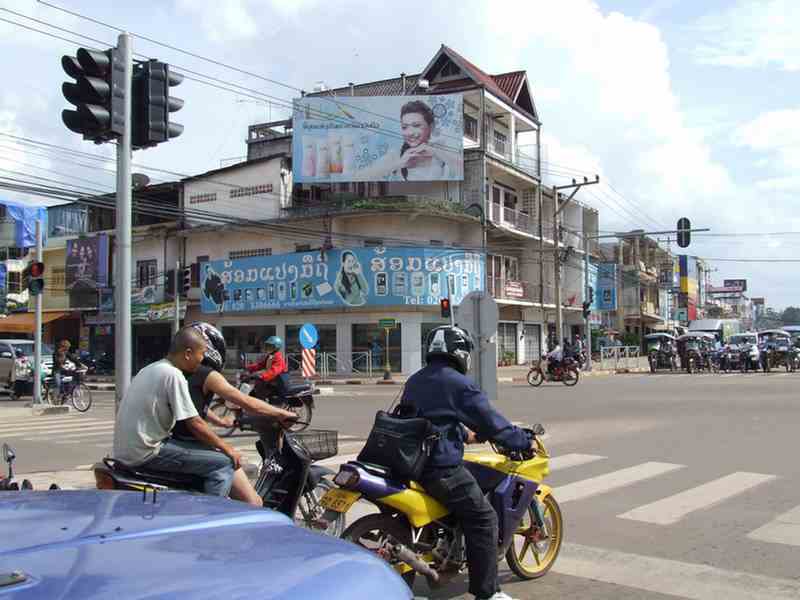

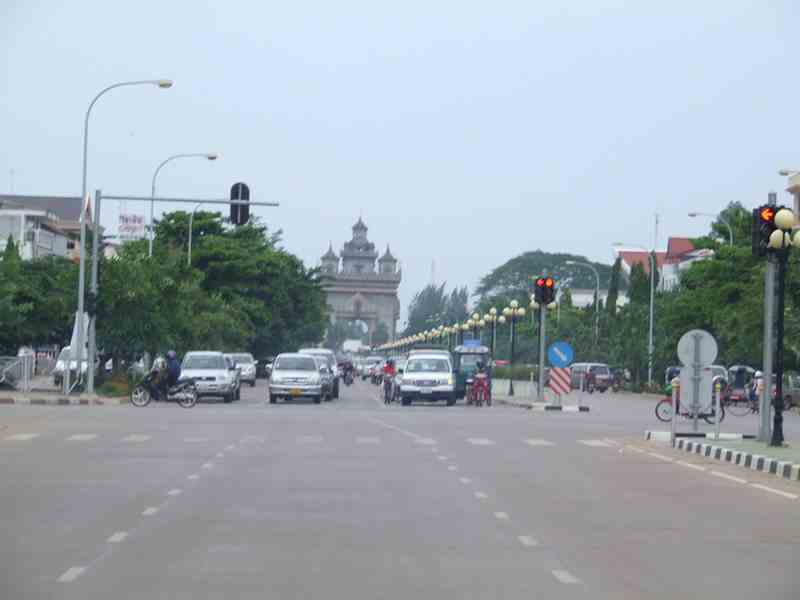
Indochina is renown for its fine food - the best of French and Asian cooking.
For breakfast there was always freshly baked French baguettes.
At a French restaurant here, we had a fantastic meal. I had roast duck with roast potatoes (and as you can
see it was beautifully presented and it was very tasty) and a delicious ice-cream with chocolate-whisky sauce.
With a couple of beers the meal cost less than $10.
And the best part ... while we were dining the owner-waiter played Für Elise and other classics on the piano.



Pha That Luang Temple
On our way out of Vientiane we visited Pha That Luang (Great Stupa in Lao),
a stupa, that is Lao's most important monument and a symbol of Lao sovereignty.
The shrine is the focus for the annual That Luang festival - Vientiane's biggest festival - celebrated for 7 days
and nights during the 12th full moon of the Buddhist lunar calendar, usually in early November.
Monks are presented with flower offerings and residents enjoy cultural performances.
One of the wats surrounding the stupa houses the current supreme Patriach of Lao Buddhism.

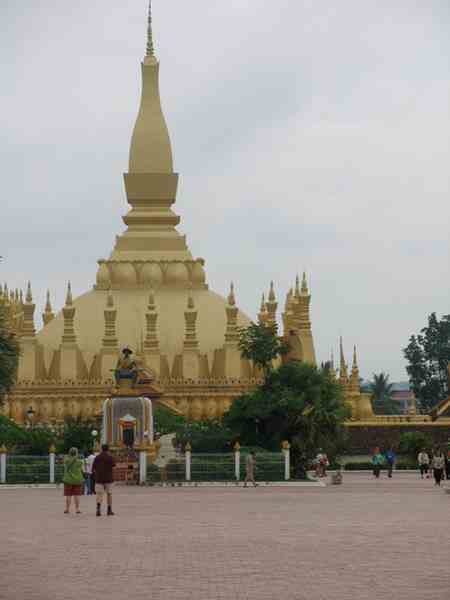


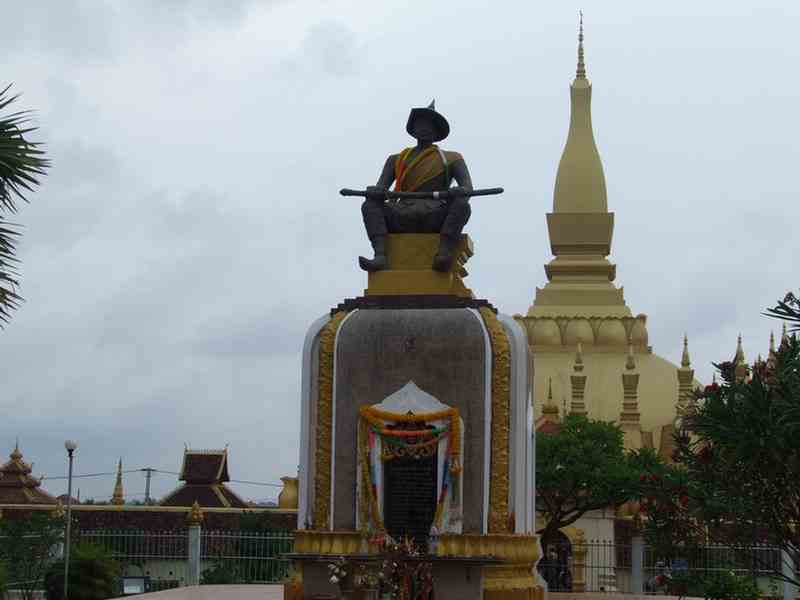
A sad sight! You could pay money in order to release these birds and make a wish.
Unfortunately the birds are probably drugged and easily recaptured.
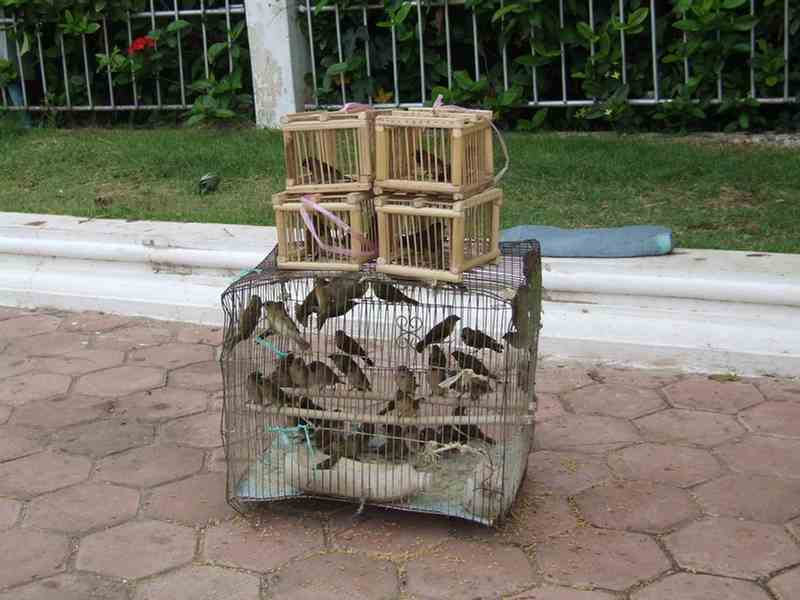
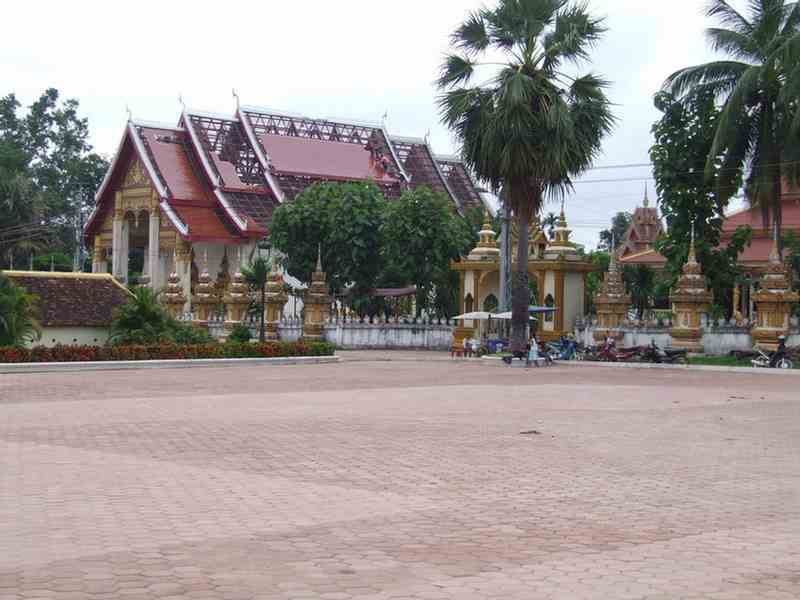
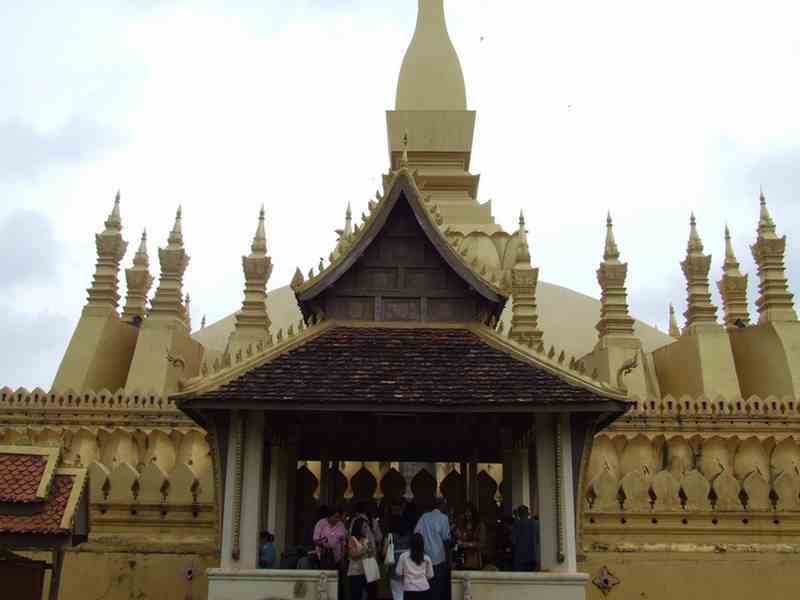
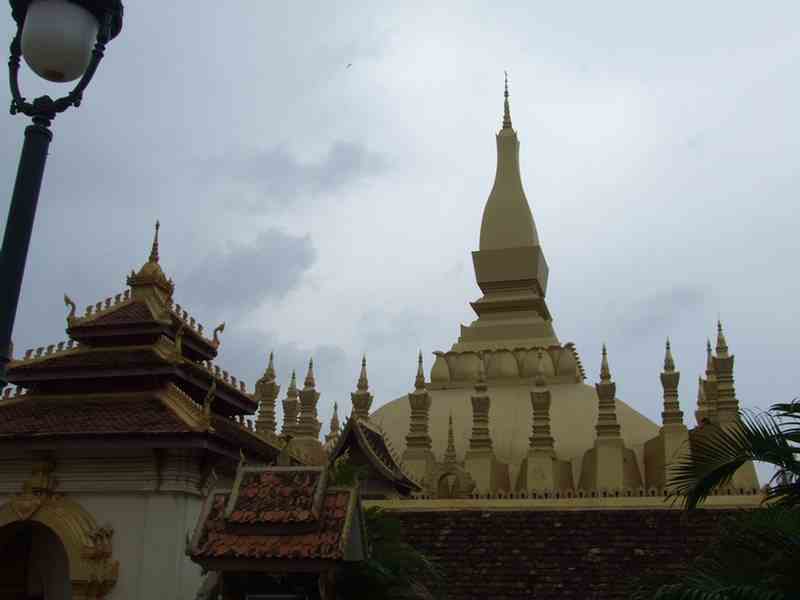
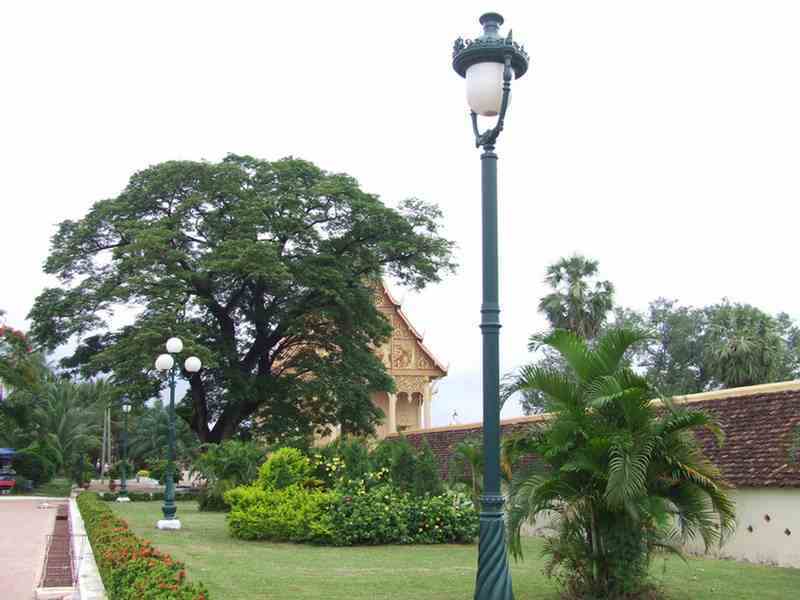
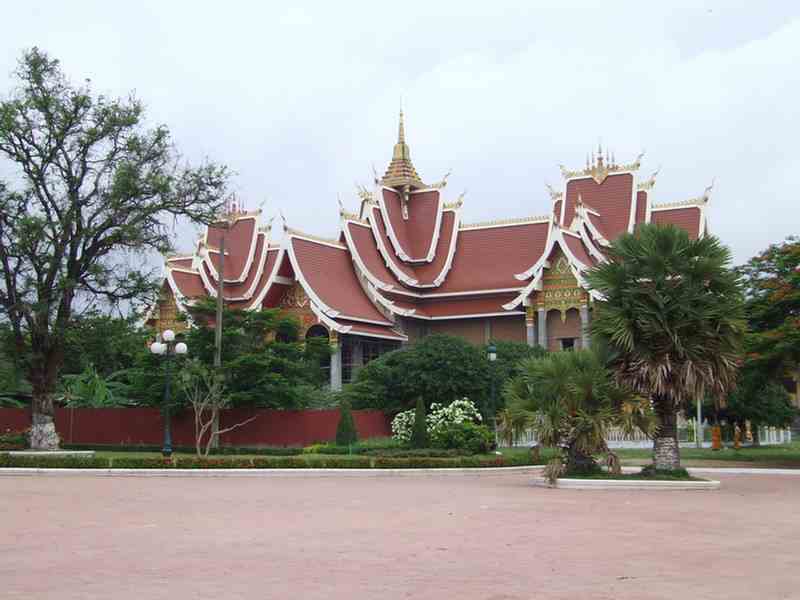
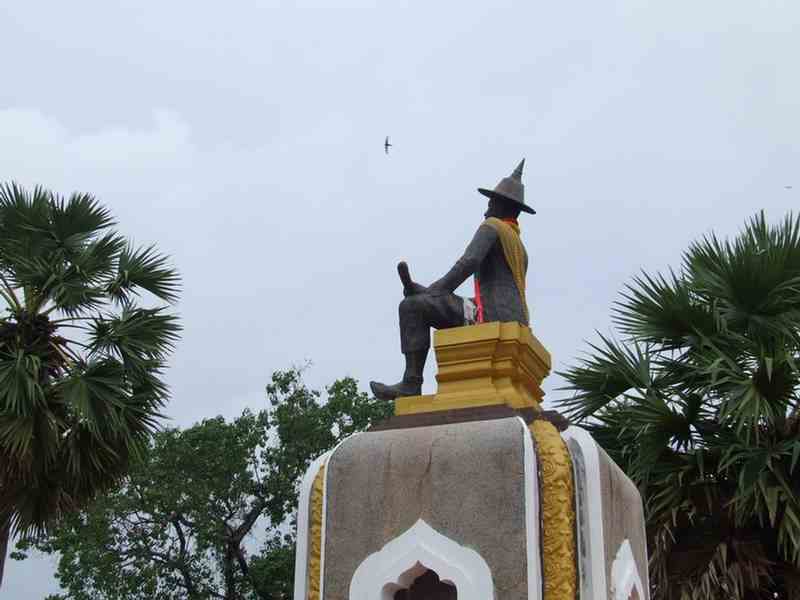
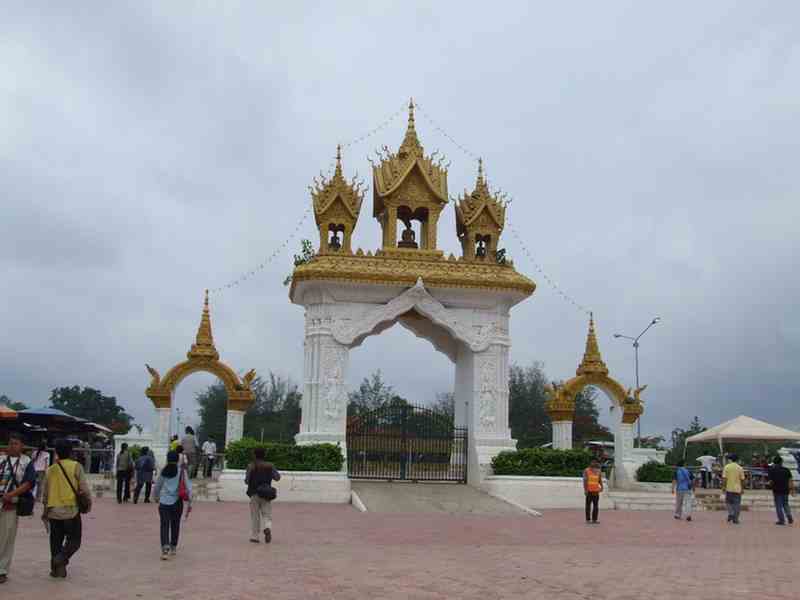
And so we leave Vientiane in a minibus heading for the Vietnam border.
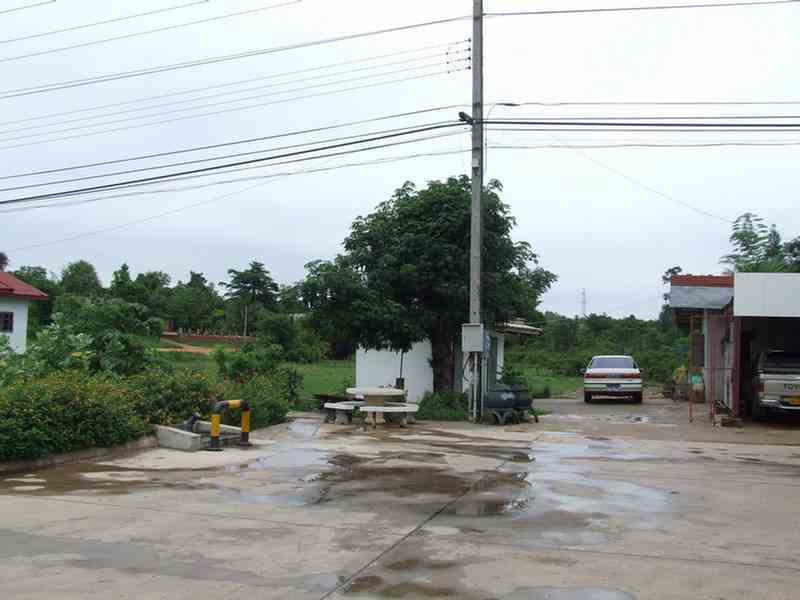
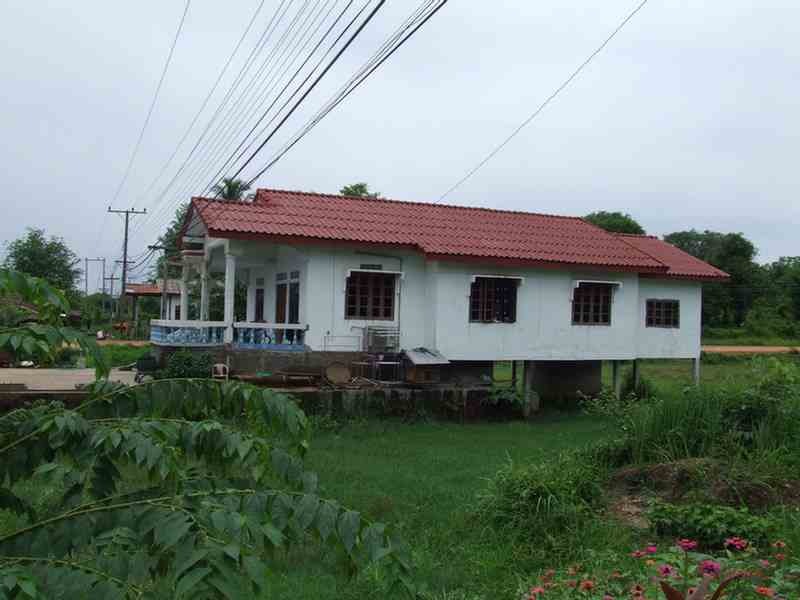

Lunch at a roadside eatery
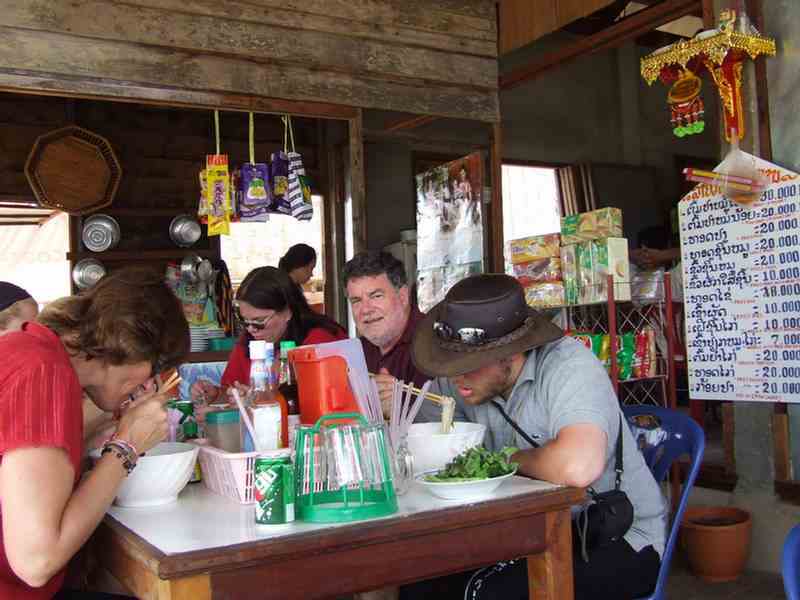
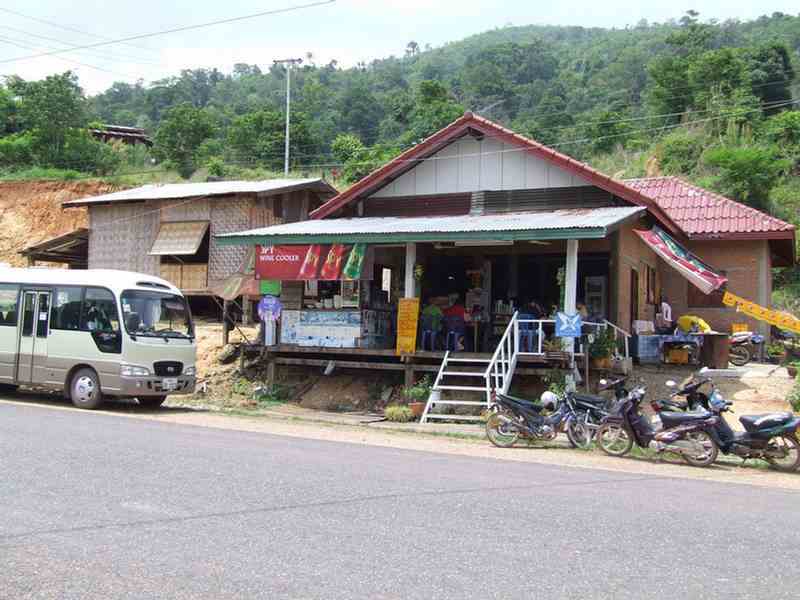


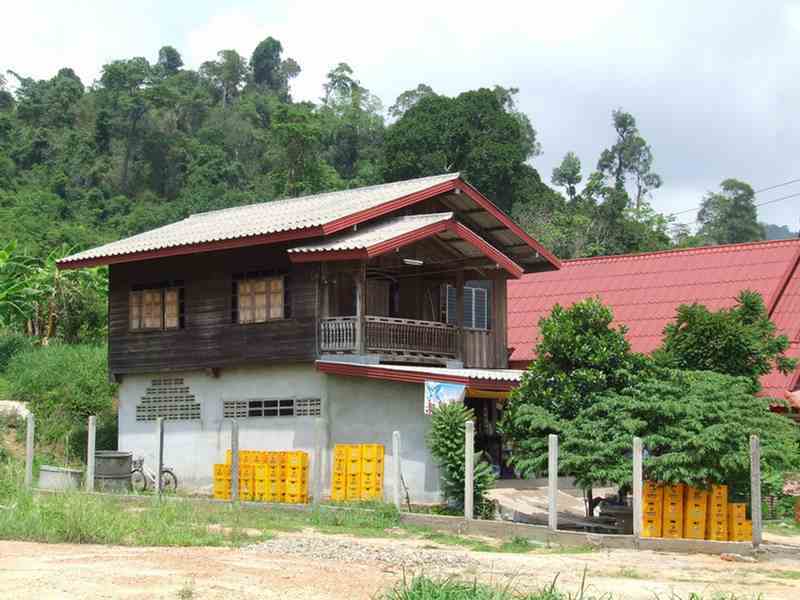
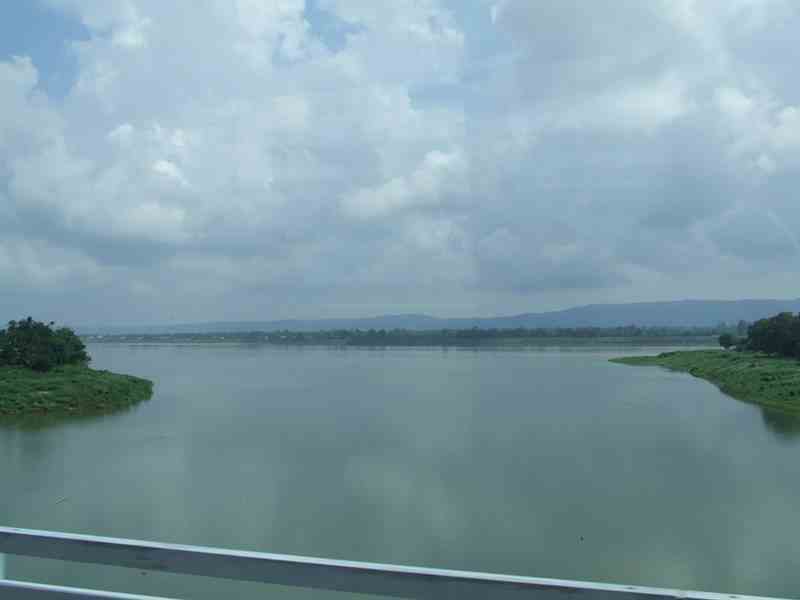
We stopped at a local market further up the road
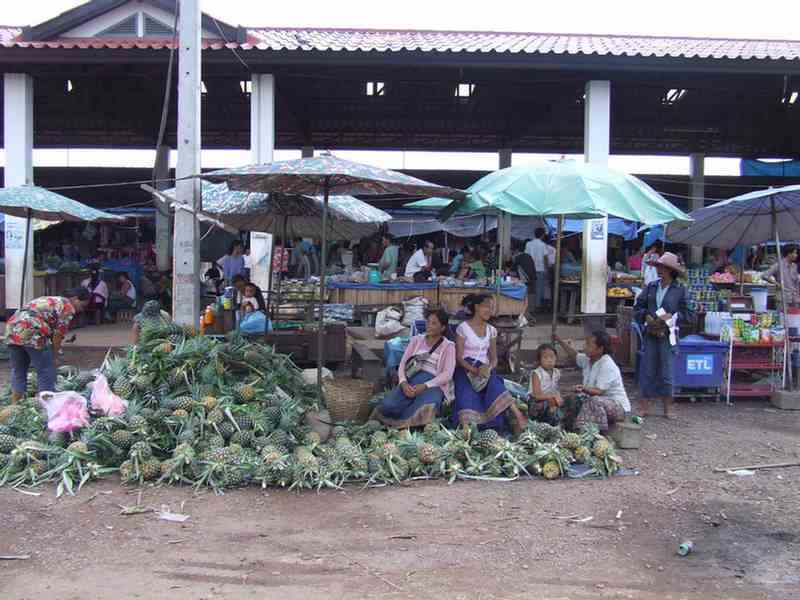
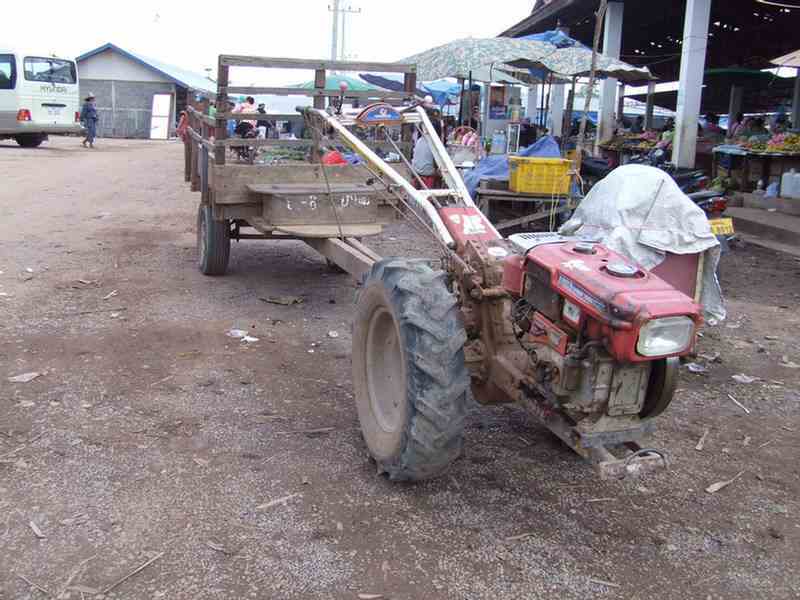

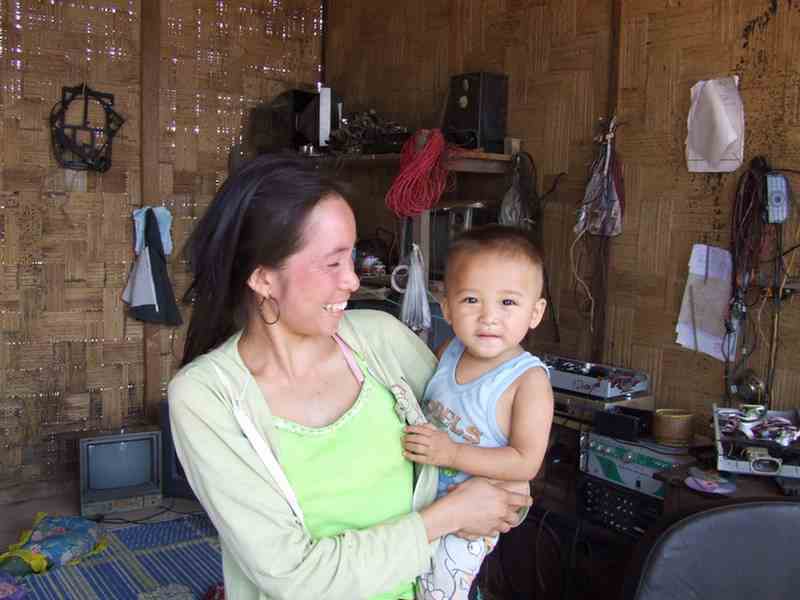
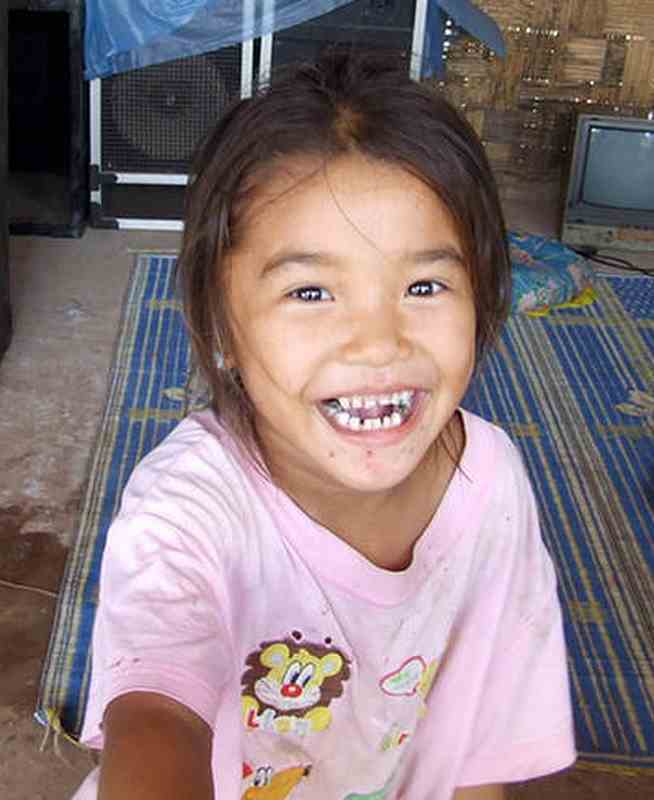
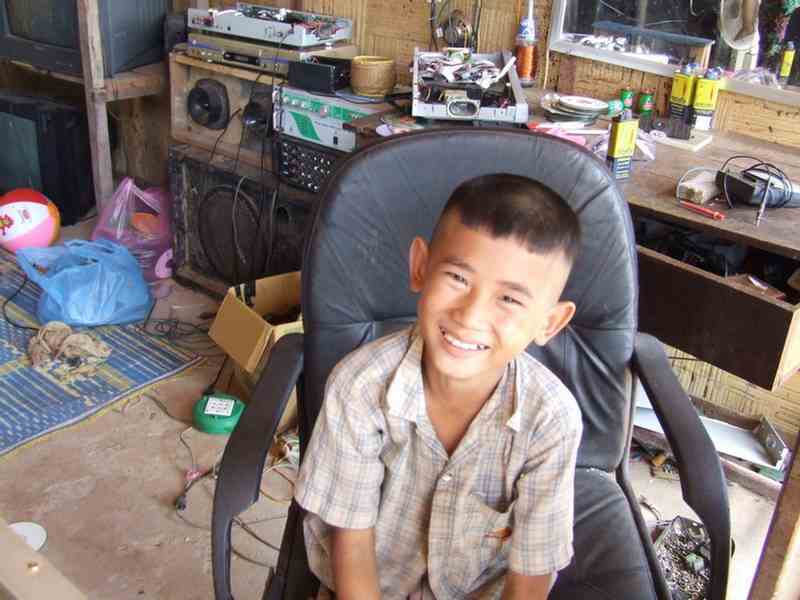
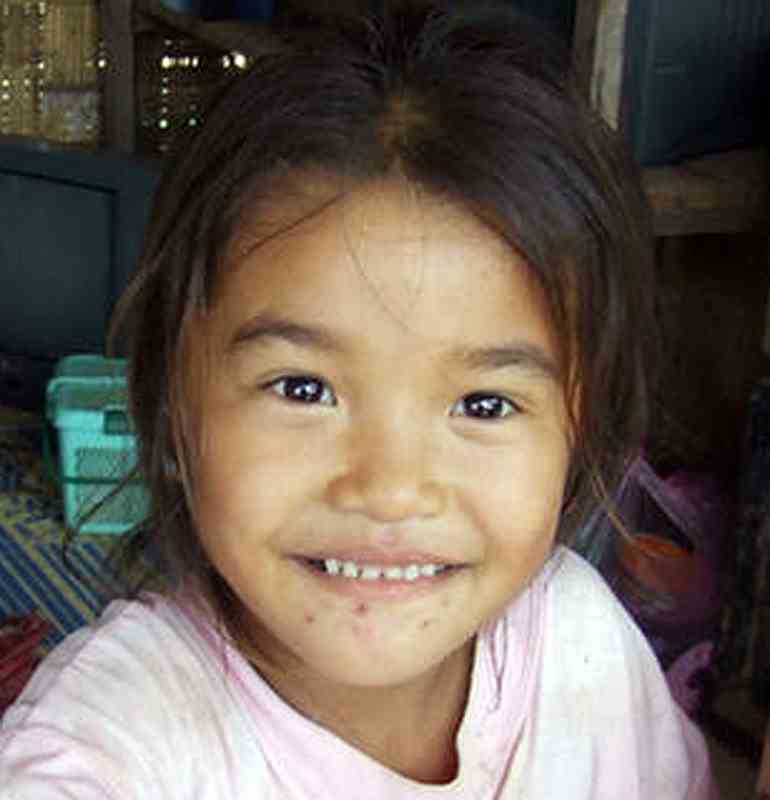
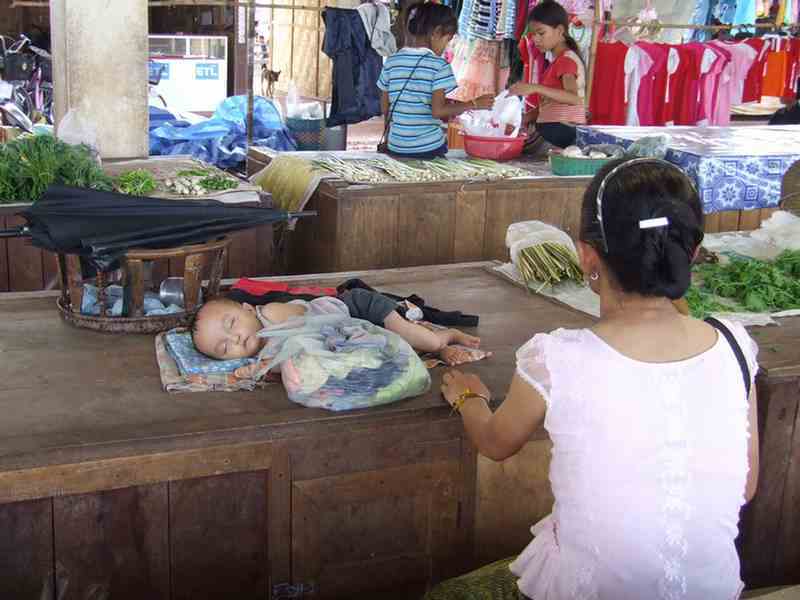
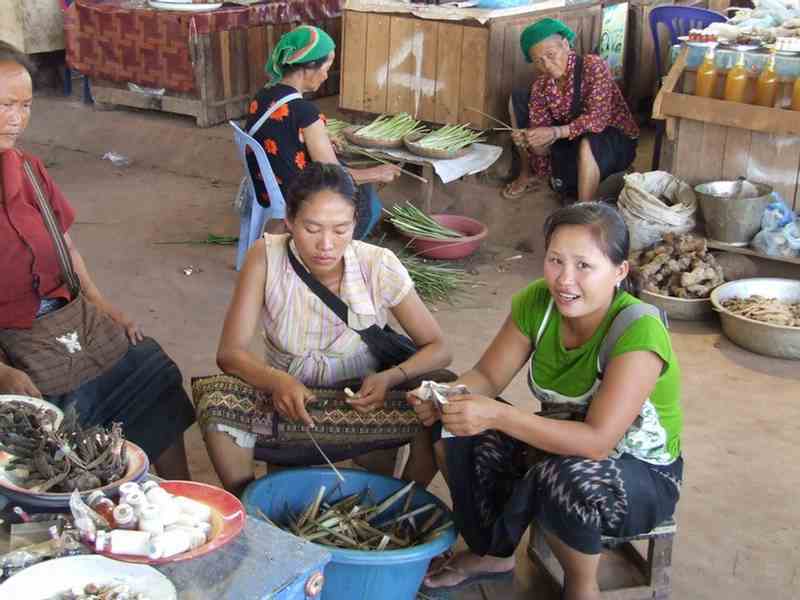
It was a slow day
I had a 4-week Indochina trip in May-June 2007.
(Melbourne – Bangkok – Thailand – Laos - Vietnam - Cambodia -Thailand – Bangkok - Melbourne)
On my IntrepidTravel tour we flew from Luang Prabang to Vientiane.
The capital of Laos, Vientianne is located on a bend on the Mekong River.
























Xieng Kuane (Buddha Park)
We caught a tuk-tuk to Xieng Kuane, a Buddha park, 25km SE of Vientiane on the Mekong River.
Full of Buddhist and Hindu sculptures, it was designed and built in 1958 by
Luang Pu (Venerable Grandfather), Bunlenna Sulilat.
He was a noble-priest-guru-sharman who merged Buddhism and Hinduism into a religious philosophy.


There are some bizarre sculptures.
The main dome is believed to represent heaven and hell



































On the way back into Vientiane from Xieng Kuane (The Buddha Park)
we stopped off at the Friendship Bridge (Mittapab Bridge).
The Australian Government funded this bridge that links Laos and Thailand over the Mekong River.
It was constructed in 1991-94 by John Holland Constructions.
























Patuxai
This is Vientiane's haughty Arc de Triomphe replica, built in a Lao architectural style.
It is an imposing, if slightly incongrous sight and it commemorates the Lao people who died in the pre-revolutionary wars.
It was built in 1969 with cement donated for the construction of a new airport, hence expats refer to it as a vertical runway.




















There was a children's festival being held in large marquees nearby
and we saw a lovely display of traditional dance by Lao children.







Vientiane, the capital of Loas, is a sleepy city. It is not the most attractive city in SE Asia.
Many people have called Vientianne, Asia's largest village.
It is however, hectic, compared with the rest of Laos.
The population is over half a million people.
Pronounced Wieng Chan (Wieng meaning city or place within the walls in Lao,
Chan is the Lao term of the Sanskrit Chandra)
and hence the city name translates to Sandalwood City.
It was the French who gave the city its present day spelling.
The French made it the capital of the protectorship in the late 19th Century.
The Pathet Lao briefly considered moving the capital to Vieng Xai.







Indochina is renown for its fine food - the best of French and Asian cooking.
For breakfast there was always freshly baked French baguettes.
At a French restaurant here, we had a fantastic meal. I had roast duck with roast potatoes (and as you can
see it was beautifully presented and it was very tasty) and a delicious ice-cream with chocolate-whisky sauce.
With a couple of beers the meal cost less than $10.
And the best part ... while we were dining the owner-waiter played Für Elise and other classics on the piano.



Pha That Luang Temple
On our way out of Vientiane we visited Pha That Luang (Great Stupa in Lao),
a stupa, that is Lao's most important monument and a symbol of Lao sovereignty.
The shrine is the focus for the annual That Luang festival - Vientiane's biggest festival - celebrated for 7 days
and nights during the 12th full moon of the Buddhist lunar calendar, usually in early November.
Monks are presented with flower offerings and residents enjoy cultural performances.
One of the wats surrounding the stupa houses the current supreme Patriach of Lao Buddhism.





A sad sight! You could pay money in order to release these birds and make a wish.
Unfortunately the birds are probably drugged and easily recaptured.








And so we leave Vientiane in a minibus heading for the Vietnam border.



Lunch at a roadside eatery






We stopped at a local market further up the road









It was a slow day

